Decoration of a brick wall. How to arrange such an interior in the bedroom? What elements and accessories to use on the wall in the bedroom
The history of the use of baked bricks in architecture dates back more than 4 thousand years. New wave interest in this artificial stone came to designers in the 20th century, when old industrial buildings began to turn into apartments and offices. And soon the brick "moved" as a decor and into panel new buildings.
The primitive-looking clay rectangle is fraught with countless possibilities. He is able to turn an ordinary apartment into a medieval castle, a hunting or country house, a factory attic or a modern dwelling with a twist.
Depending on the goal different types bricks are used in the decoration of various interior elements.
Industrial revolution in the interior
In what style is decorative brick trim used? In the interior of lofts - industrial premises that have become dwellings - brick surfaces occupy a dominant position. If the wall was originally made of brick, it is enough to clean it from dirt and dust mortars, wipe the seams and varnish, otherwise the surface will crumble. For the sake of stylistically correct “shabbyness”, in some places you can apply rough texture plaster or a thin layer of paint with rough strokes.
Where to get decorative brick in the interior modern apartments? Since inhabited factories are now rare, it is more often necessary to create lofts from ordinary apartments. In this case, the new brickwork is deliberately aged: acid solutions are used, sandpaper, hammer, acrylic paints and other handy tools.
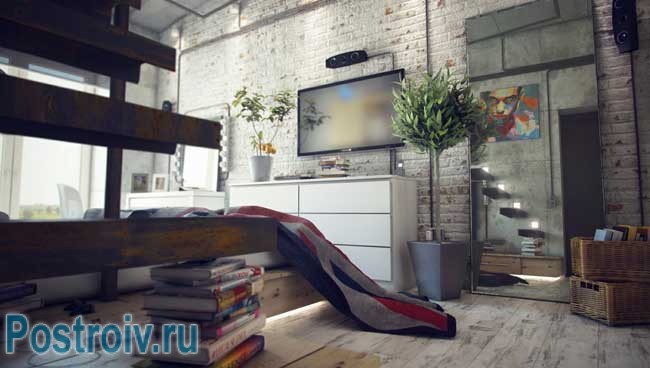
Separate areas can be "smoky" with a blowtorch. The “burnt” corners of the walls under the ceiling look especially impressive: this is how the room is overgrown with a legend about a fire that once raged here.
Additional loft style elements in the interior of a modern apartment
In addition to decorative brickwork, the spirit of industrial aesthetics is supported by old ceiling beams, uncurtained windows, wooden floor. Special place the decor is occupied by paintings. They can simply be placed on the floor, leaning against the wall, or hung in the usual way. The more modern the content of the paintings (abstractionism, impressionism and pop art are welcome), the better their union with archaic brick looks.

Gothic Middle Ages in a single apartment
To create the atmosphere of a medieval castle, we need the same aged brick, only traces of the “fire” should be abandoned. The brick wall in the interior, painted in dark gray, looks brutal. A layer of paint is applied thickly so that it fills the seams unevenly.
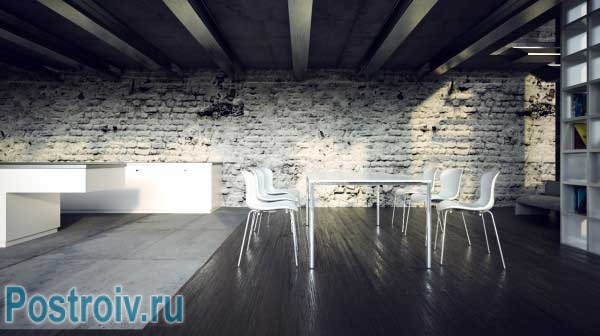
In addition to the walls, columns and semi-columns, lancet arches are trimmed with bricks. This finish is suitable for any room, from the kitchen to the bedroom. IN high rooms(dining room or kitchen) you can tile the vaulted ceiling with brick tiles. This will create the illusion of an old wine cellar. By the way, it is easy to arrange cells for storing bottles in the walls.
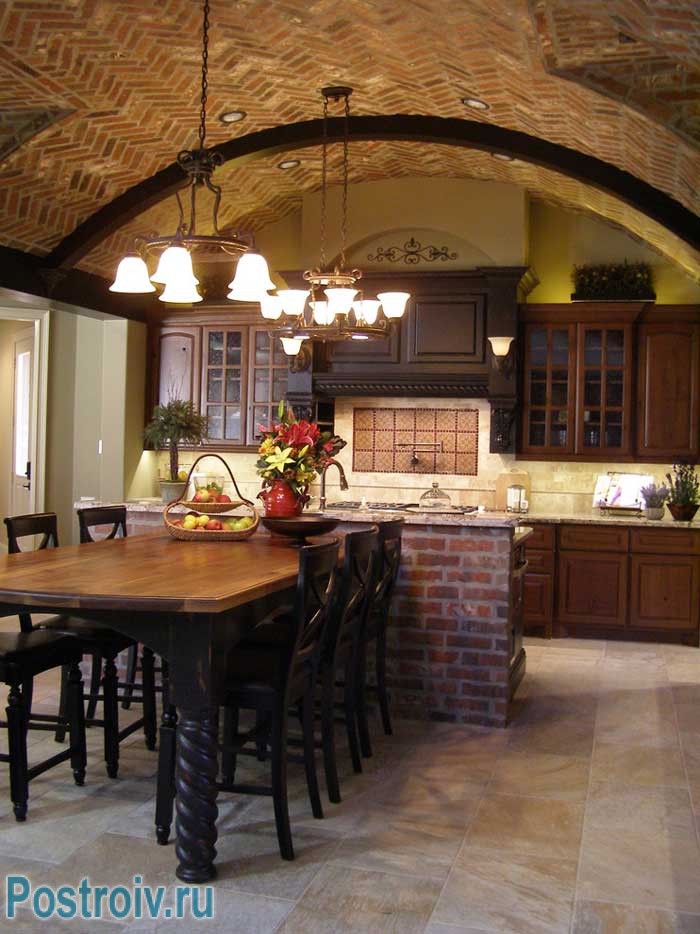

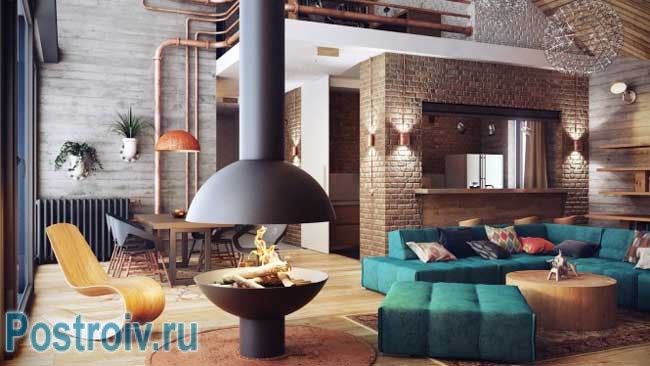
The Gothic style is a combination of rough brick with luxurious furniture, decorated with elaborate carvings and artistic forging. Huge chandeliers and massive candelabra will enhance the effect. Ancestral portraits and heavy dark curtains complete the creation of a medieval fairy tale.
Country estate or hunting lodge?
Brick - typical construction material For country house, it also acts as a finishing material. The aged surface of the walls, canvases with hunting scenes and elk antlers above the fireplace “shift” the room into the past for a couple of centuries. New brickwork and clear contrasting seams look more modern. In any case, indispensable companions of brick walls in the interior are wooden window frames, doors, floors and furniture. You can't do without a brick-lined fireplace.

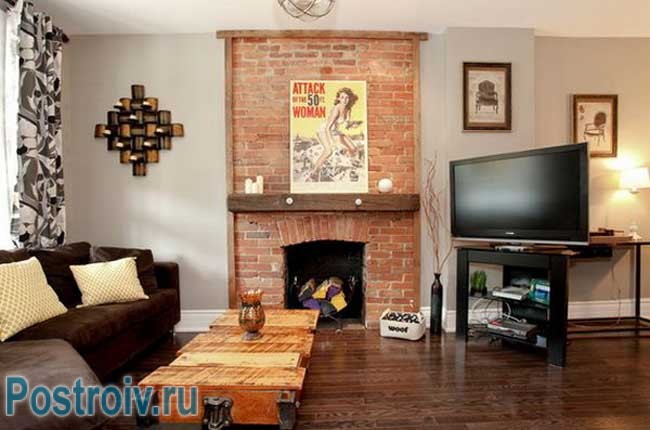
Brick with a Provencal accent
Another option for a country house is a dwelling in the style of rural Provence. Brick, painted white, rules here. To give naturalness and the spirit of antiquity, it can be aged, edges rounded from time to time, a cracked surface are allowed.
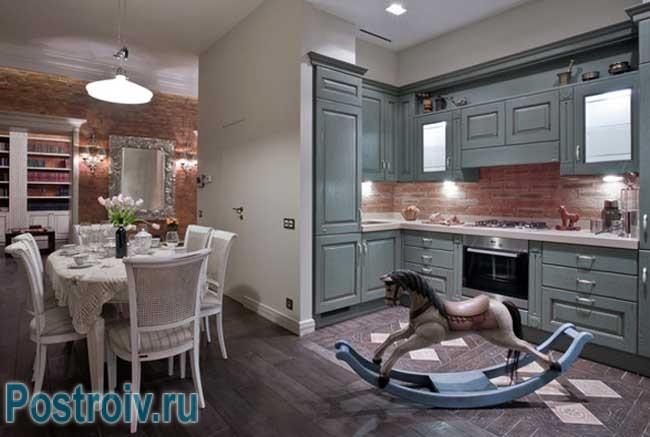

As a rule, one wall is trimmed with decorative brick indoors - for example, in the kitchen at dining area or as an apron. Brick wall can be behind the head of the bed or behind the sofa in the living room. Light brick does not focus on itself, but brings a certain rhythm with its texture. Suitable details for white rural bricks are small still lifes and floor vases with flowers.
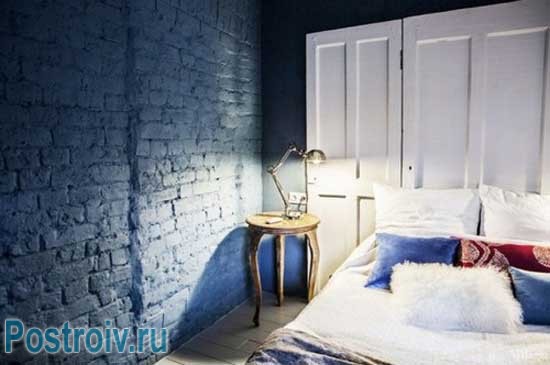
Contemporary brick design
Despite its age, brick is also used in modern interiors. Minimalism or Scandinavian style quite allows for the presence of brickwork on accent walls or in niches. You can lay out part of the wall with bricks, leaving “torn” edges to highlight the bar area or hallway. IN last case brick symbolizes the transition from street space to home space; it is appropriate to place shoes against its background.
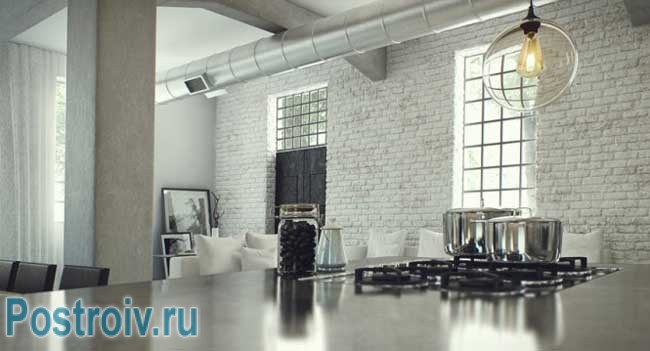
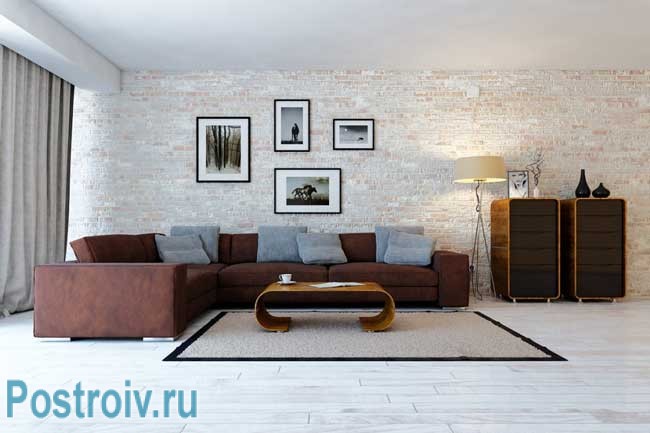
In minimalism, as a rule, red or brown brick is chosen, which contrasts with white, gray and black surfaces. The Scandinavian style stops on the walls of light colors: white, blue, pastel yellow. Bar counters, kitchen islands, half-columns and partitions, pools, bathrooms, sinks, showers are also lined with bricks. This gives the furniture solidity and geometric clarity.

Increasingly, designers are returning to glass blocks. rectangular shape. Interesting half-partitions are made of colored glass bricks, which act as screens in studio apartments.
Brick or “brick-like”: we decide on the material
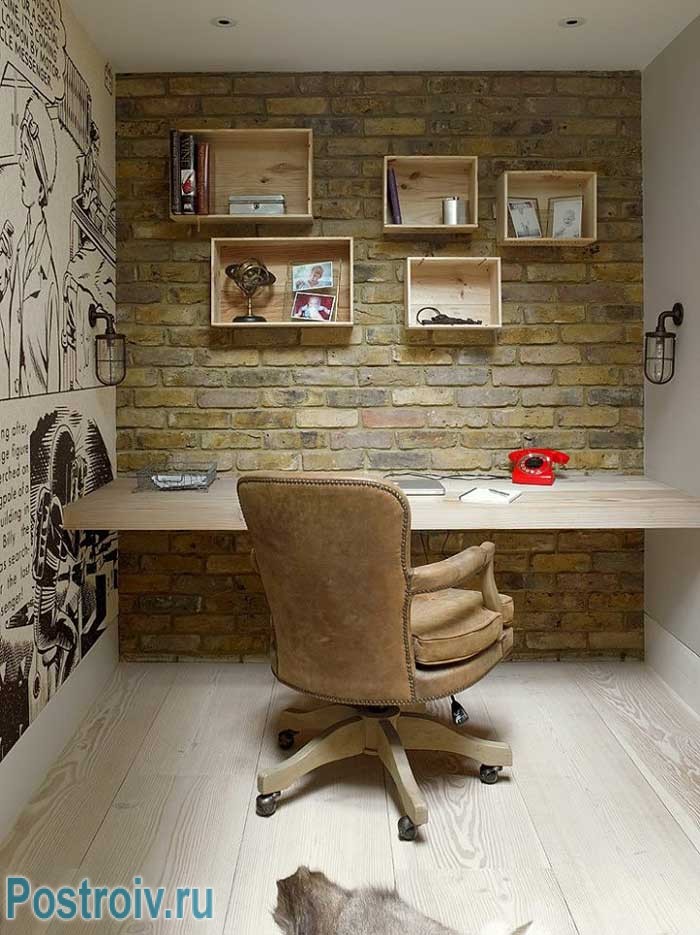
How to create decorative brickwork? The simplest and economical option- process the "native" brick wall. She can leave the natural color, artificially age the surface or paint. But if the builders have deprived you of such a wall, you can fold it from facing brick or brick tiles.
The facing brick is similar to the usual one, but lighter and with thin walls, due to which it "eats" less volume. Today you can find options for the most different shades, matte or glazed, aged or new.
Brick tile ("veneer") is even lighter, so it is well suited for finishing thin plasterboard walls. Tiles are laid, like facing bricks, on flat surface, is fixed with special glue for stone, and then the seams go through with ordinary grout. By the way, a similar 2.5 cm thick baked clay tile was used under Ivan the Terrible and was called plinth.
Glass brick, which was discussed above, is also the most different colors, and sometimes contains inclusions in the form of plants or shells. Facing with such material is often combined with lighting.
A simple option for imitation of brickwork in the interior is brick-like wallpaper. It can be wallpaper for painting, repeating the texture, or colored wallpaper with a brick pattern. This option is successfully used for decorating wall niches.
Brick in the interior is not only successful designer find, but also practical solution. Durable, water-resistant and tolerant of temperature changes, it feels great in any room. Bathroom or kitchen, cellar, living room or bedroom - everywhere the brick is in its place, creates a unique atmosphere and speaks of the impeccable taste of the owners of the home.
Brick wall in the interior - photo
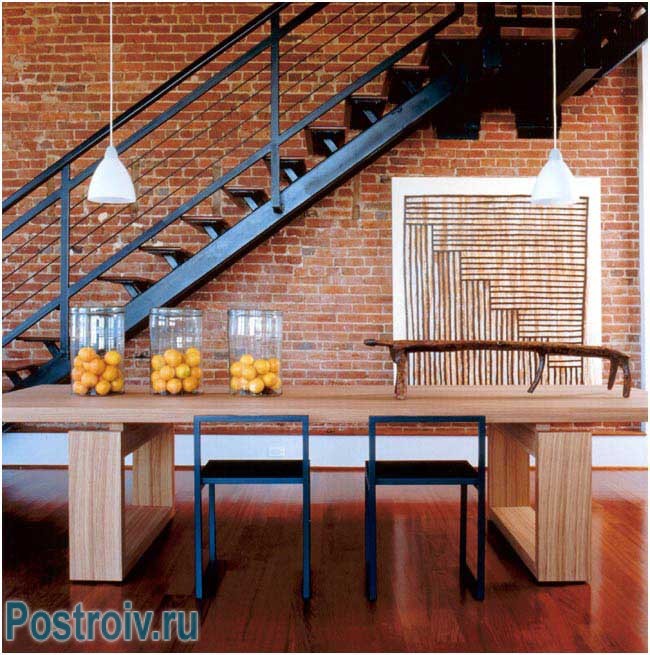
Everyone knows that the expression "my house is my fortress" is understood in a figurative sense. But what if you really imagine the house as a fortress?
And not only his external design but also interior decoration. Probably, it was this visual image that was guided by the first designer who proposed using white decorative. This finish immediately brings us back to the days of ancient stone castles, when ladies wore chic dresses, invariably attracting gallant knights at balls.
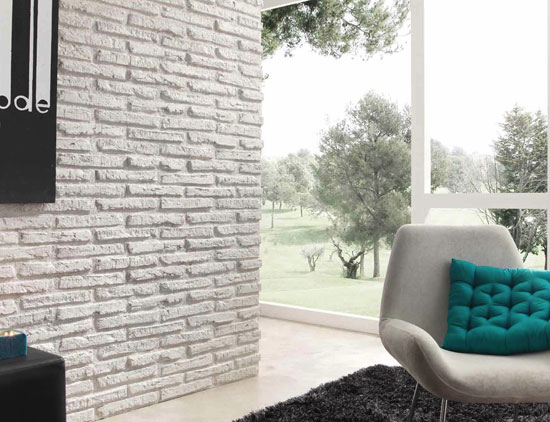
To get into those times, at least only mentally, will help part of the wall or a whole white brick wall in the interior, as well as brick finishing certain areas, for example, door and window openings or arches. Of course, not all design styles welcome such a “rough” stone decoration of the living space, but individual rooms without such decoration are simply unthinkable if you at least once see how spectacular a white brick wall looks in the interior.
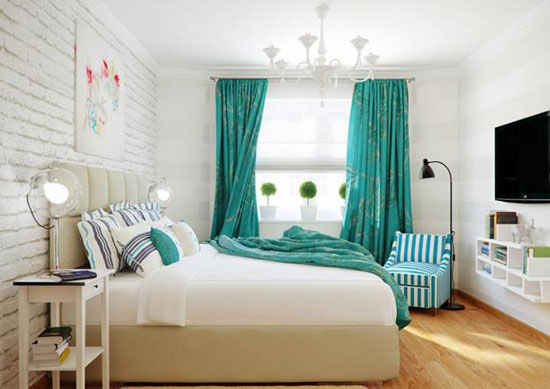
There are several options for decorating walls or other interior surfaces with bricks, and it is not always necessary to use this material. Some finishing materials successfully cope with the function of imitating brickwork. So, a white brick wall in the interior of an apartment can be created in the following ways:
- natural way
Natural white brick wall in the interior can not only give the room aerial view, but also slightly increase its size. This method is suitable for the inhabitants of brick houses, because here you just need to remove all finishing materials (wallpaper or panels, plaster, etc.) from desired wall and then treat the masonry with a special protective coating.

In the event that colored bricks were used to build the house, the wall is preliminarily painted white. If the house is old, it will be possible to treat possible cracks in the masonry and seams with grout or a special mortar, or you can not do this, creating an atmosphere of antiquity in the room. In some cases, the masonry is specially aged by adding cracks and chips.
- All other methods can be attributed to decorative
One of them is the use of facing bricks. In general, white decorative brick is used quite often in the interior of residential buildings, but usually it is the decoration of small objects: columns, a corner in a room, a fireplace, an opening front door, stairs to the basement, etc. However, a whole wall, and even several walls, can be decorated with it.
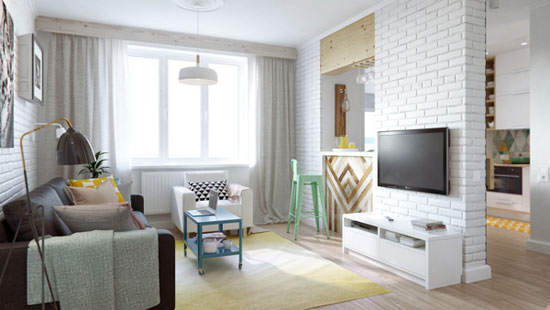
The advantage of such a material is its moisture resistance, strength and density, which means that a white decorative brick in the interior of any room will last a long time and without additional treatments. In addition, it is much thinner than natural brick, which means it will not “steal” the slightest fraction of the space.
- Another artificial way is to use tiles
Such a wall white brick not much different from natural material, but much easier in terms of finishing and further care of the surface. Such a coating can be easily used even in those areas of the kitchen where grease stains or splashes often appear.
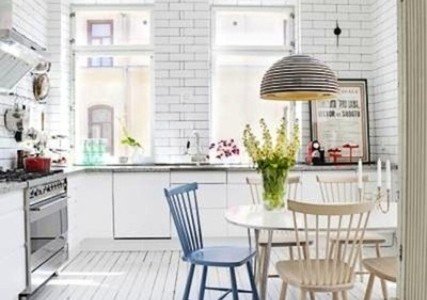
- Also, an imitation of brick is easily created using wallpaper
This is one of the easiest ways to create a "brick" atmosphere in the house, but such an imitation is too noticeable and looks quite cheap. In the living room or bedroom, finishing with “brick” wallpaper is unlikely to be appropriate, but in corridors, small hallways or closets, a white brick wall will come in handy, because here even a small thickness of another material will “steal” such an important and not at all superfluous space here.
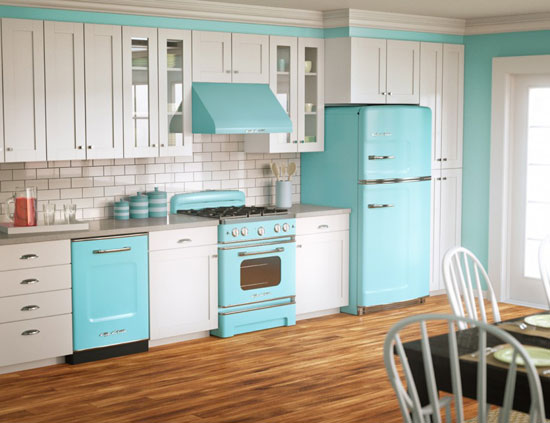
White brick walls in different rooms
White decorative brick will look best in the interior in the Gothic or Neo-Gothic style, as well as in modern styles: loft, minimalism, hi-tech. You can add a “bare” wall here with chrome-plated surfaces, forged elements, metal, technical innovations and a minimum of accessories.
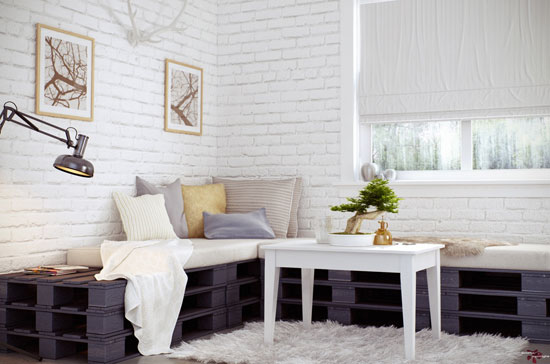
For eco and rural style, a white brick wall in the interior will also be quite appropriate, since brick is a natural and environmentally friendly material. In some ethnic styles, "brick" motifs will also create the desired cold atmosphere. Even in classic interiors you can use a similar finish, you just need to properly design and decorate the room.
Living room
A white brick wall will look great in the interior of the guest room. Often it is the living room that is decorated big amount decorative accessories that will effectively stand out against the background of a white wall.
So, home plants or a bright original sofa will attract attention if placed against a white wall.
In studio apartments, using white brick walls, you can zone the space, visually separating the living room from the kitchen. White brick can also be used for facing the fireplace and the wall around.
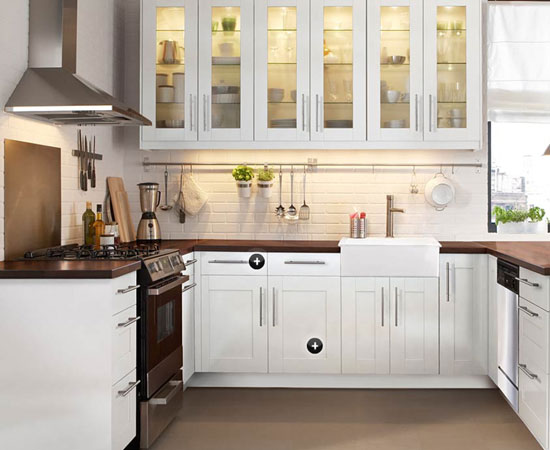
Note that the most important function of a brick white wall is visual extension spaces, when the room seems more spacious and bright.
However, it is worth considering the lighting in advance so that the living space is not perceived as leading deep and far into the dungeon. Commonly used Wall lights, which spotlight both the upper part of the wall and the object directly below it. In this case, the gaps between the bricks favorably emphasize the texture of the masonry.
Bedroom
There is an opinion that the bedroom should be as cozy and “warm” as possible. However, even here the most creative personalities allow themselves to show imagination and design. More often, of course, white decorative brick is used in the interior of the bedroom. This allows you not to deprive the walls of natural insulation. Such a "cold" wall in the bedroom with south side will add the desired freshness and coolness.
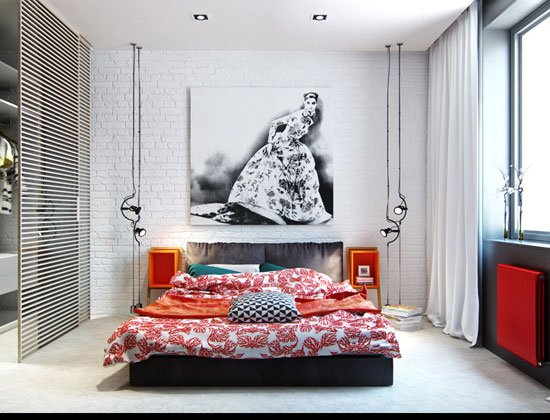
by the most interesting solution the white brick decoration of the space behind the head of the bed is considered. The room looks great black and white when a dark bed stands out effectively against a white wall. Black and white images above the headboard will also be appropriate here.
Kitchen
The kitchen is another opportunity to experiment with white walls. Here, white brick can be used to visually separate the dining area from the workspace. In enough spacious kitchen additionally, with the help of facing bricks, you can finish the bar counter or kitchen island.
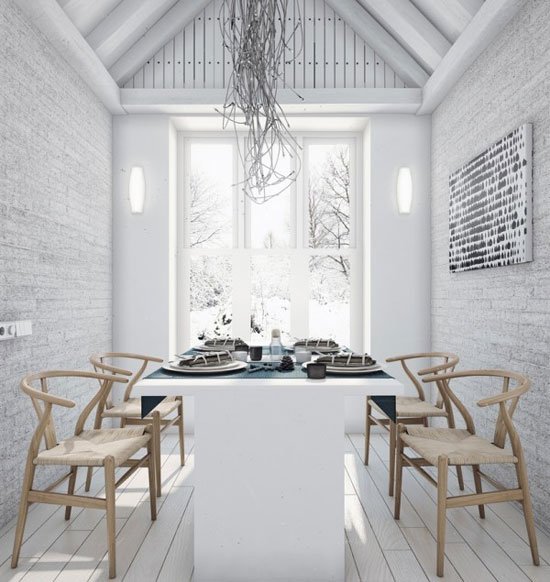
Also in the kitchen, a wall made of tiles under a white brick is appropriate.
The interior of the room is like the mood of your home. Your comfort, calmness and good mood will depend on it.
Agree, it is very difficult, almost unrealistic, to relax in a poorly decorated and unkempt room. To give your home uniqueness, warmth and comfort, you can use various finishing materials: paint, wallpaper, plaster. But what if we take a completely new, original and very pleasing to the eye and environment in general design of brick walls? Do you like this idea? Want to make it happen but don't know how? In this article we will talk about modern, durable and quality material that allows you to replace the real brickwork. It's about decorative bricks for interior decoration walls in any room.
decorative brick for interior decoration in the interior of the kitchen
Who is this style solution for? A brick wall can easily fit into almost any interior, which allows you to use such decor in an apartment, in a country house, in a cottage, and so on.
Description and application of decorative brick for interior decoration
Among the vast number facing materials many people prefer decorative bricks. This is original, plus you can create a unique design on your walls, because the product has many variations of colors, design and textures - bricks are made from different materials.
There are several types this material, which have special characteristics and some differences. The fact is that at the moment decorative brick is considered a kind of artificial stone - manufacturers have learned to reproduce the brick pattern, which has significantly expanded the range. And, if earlier there were only two types of bricks for interior cladding, then today the choice has expanded by several more positions. As already mentioned, fake diamond can be created from various raw materials:
- Gypsum is the easiest, most economical option that can be made at home.
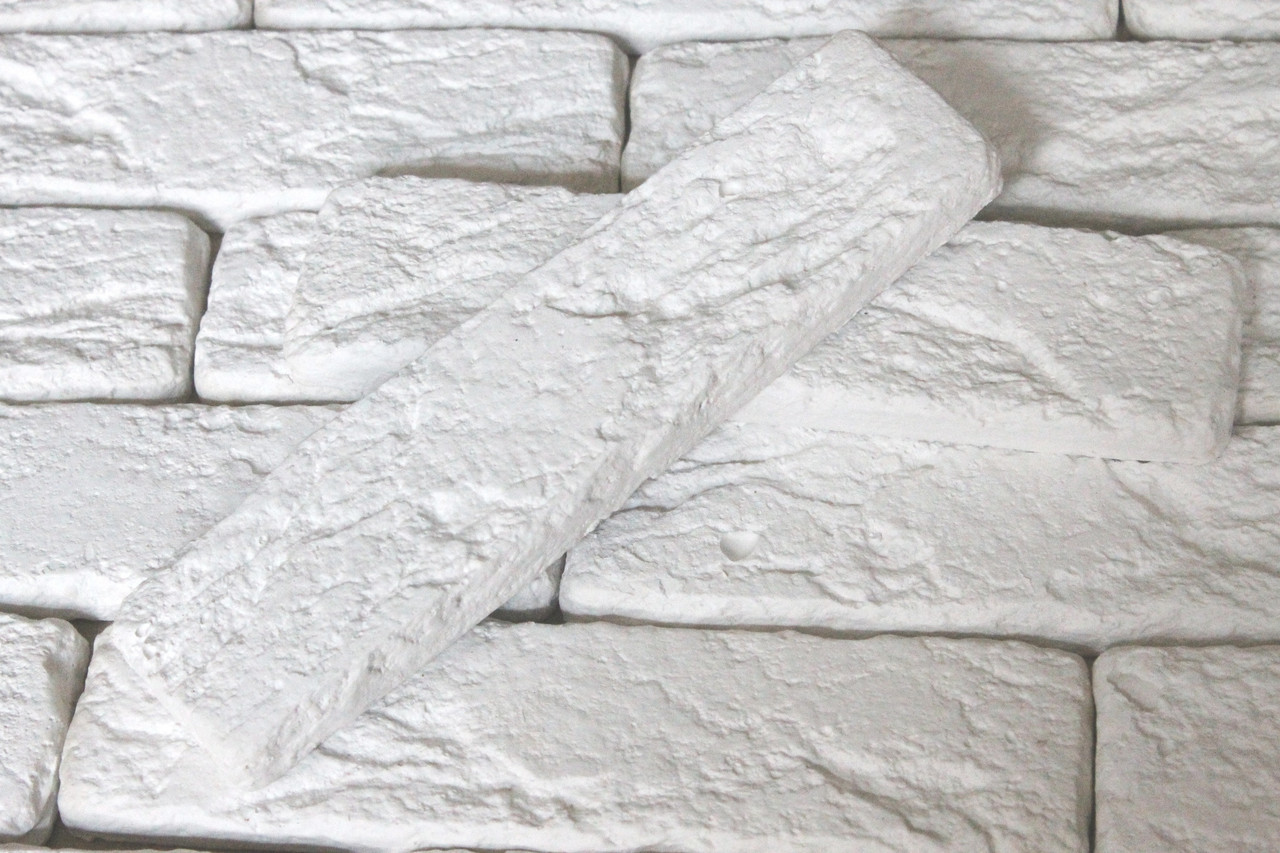
Decorative gypsum brick
- Ceramics - different unprecedented beauty. Can be glossy or matte.
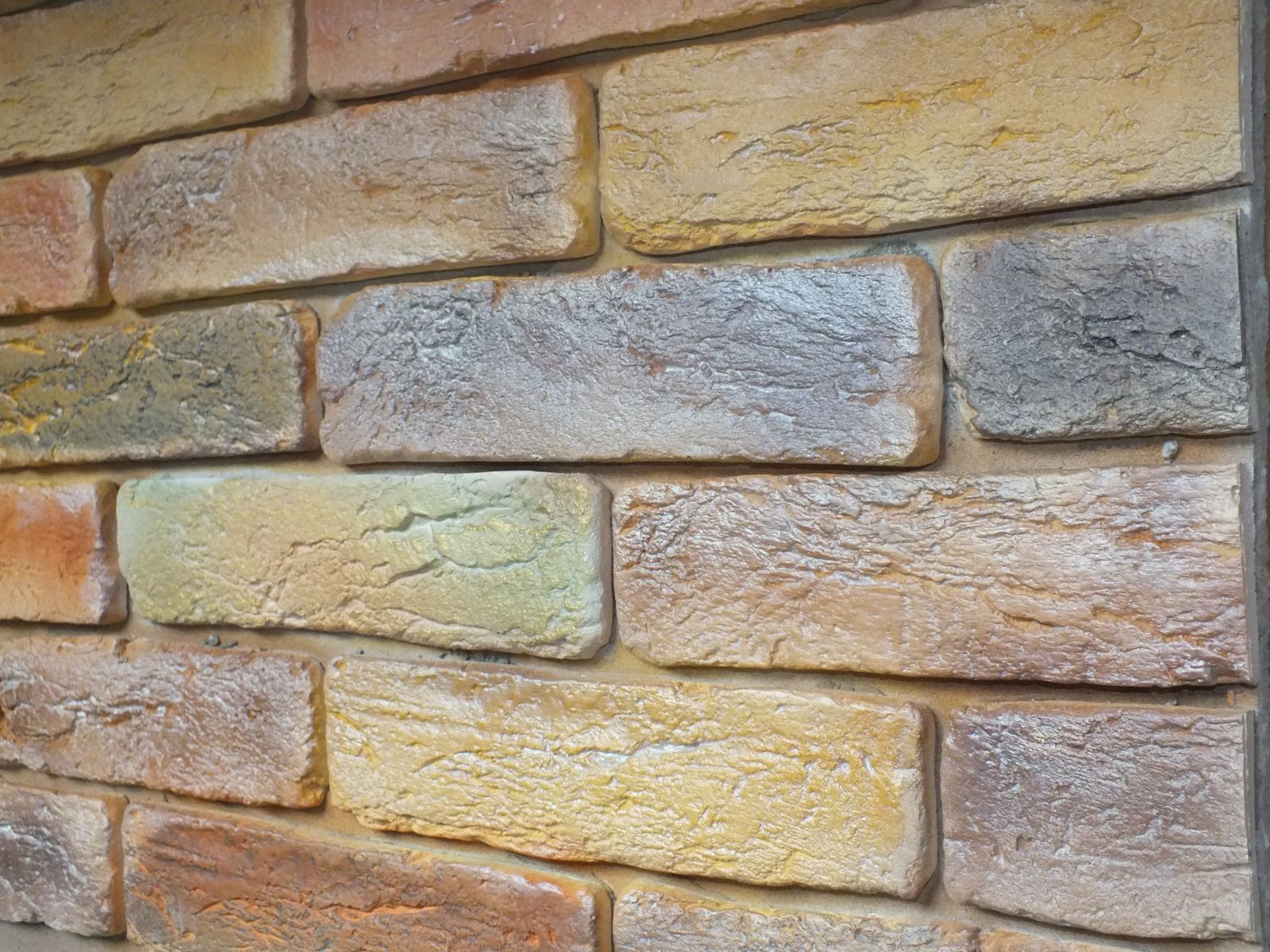
Decorative ceramic brick
- Ceramic granite is the strongest, most durable and environmentally friendly material.
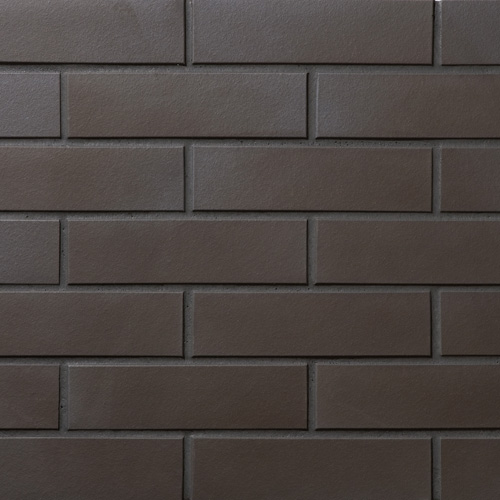
Ceramic decorative brick for interior decoration
- Synthetic materials and acrylic - flexible, elastic, obedient and in demand.

Acrylic decorative brick
- Clay - clinker brick is considered the most expensive, but it can be used for finishing fireplaces and chimneys.
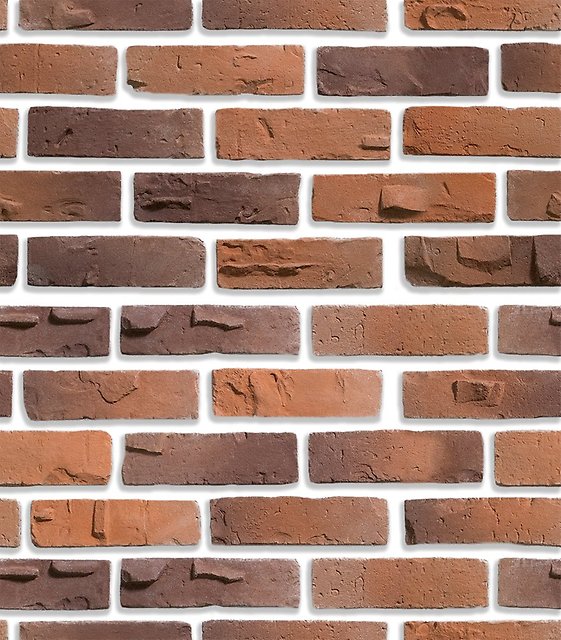
Clinker decorative brick for interior decoration
Among the shades it should be noted:
- The standard colors used in any interior style are white and red.

White decorative brick in the interior
- Beige, brown or light sand.
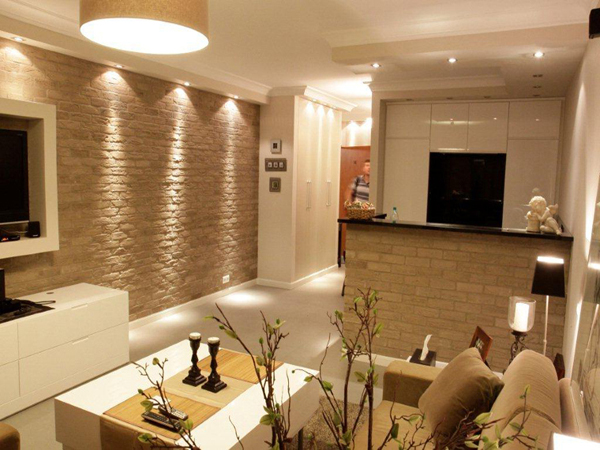
Decorative sand brick
- Brown, with red clear blotches.

Brown decorative brick for interior decoration
Interesting fact: IN modern design The interior often uses specially aged brick decorative stone - it is ideal for creating an antique style.
Let us consider in more detail each type of material for interior decoration.
Gypsum brick
This material is considered the most inexpensive, practical, durable and reliable. And also do not forget about the variety of textures and sizes of the resulting masonry. Another advantage gypsum stone under the brick is the absence of deformation during temperature changes.
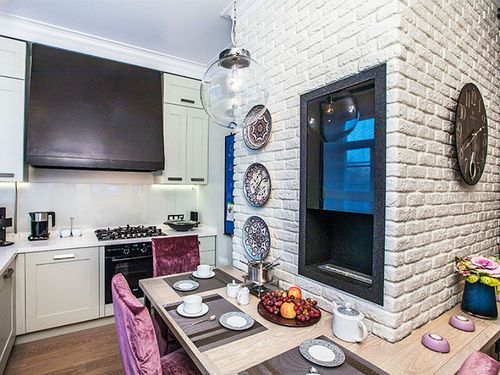
Gypsum decorative brick is resistant to temperature changes
Important: But such a brick cannot boast of moisture resistance. Absorption can only be avoided by applying a special protective coating- varnish or paint.
According to the texture, appearance of the surface, gypsum decor can be:
- Matte - always processed by special means to protect the stone from damage and water ingress. Naturally, it has no shine.
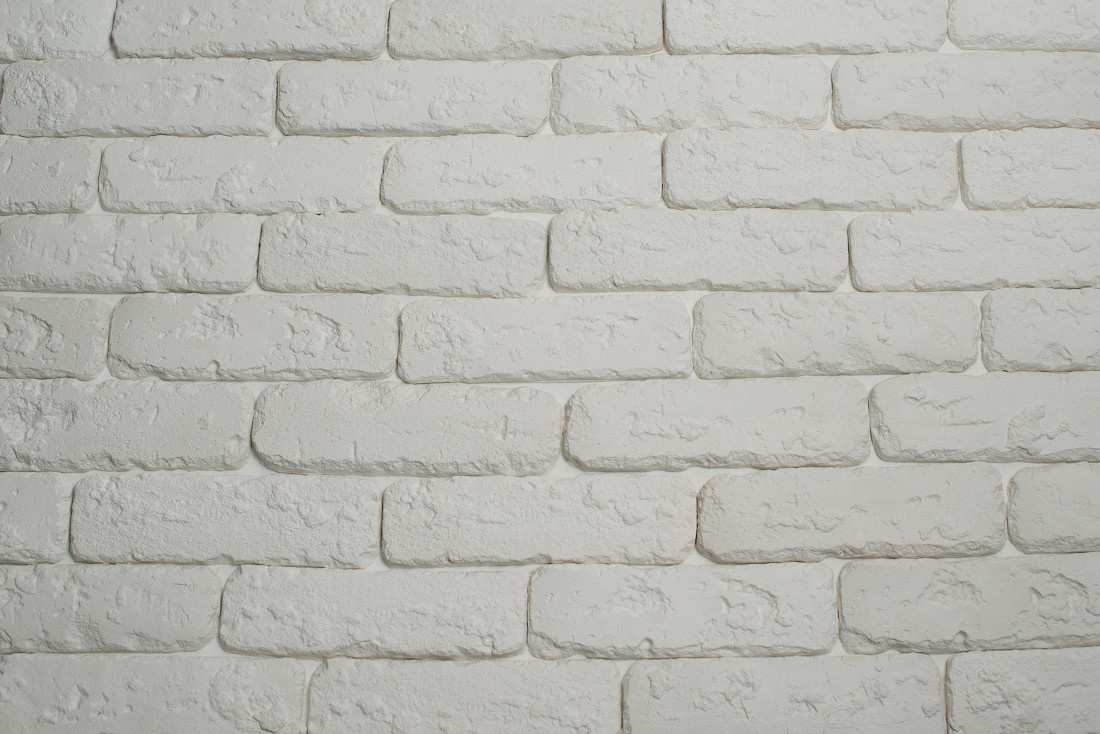
Matte decorative gypsum brick
- Glossy - has a beautiful, even reflection. Be sure to varnish, which provides a wonderful gloss effect.
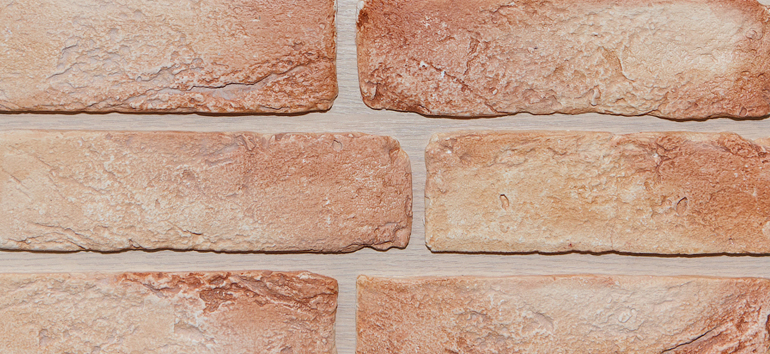
For shine, gypsum bricks are varnished
- Torn - the finish does not have a flat surface, but is created as a chaotic arrangement of corners and roughness.

Torn decorative brick for interior decoration
- Embossed - the surface is made using a variety of relief overlays.
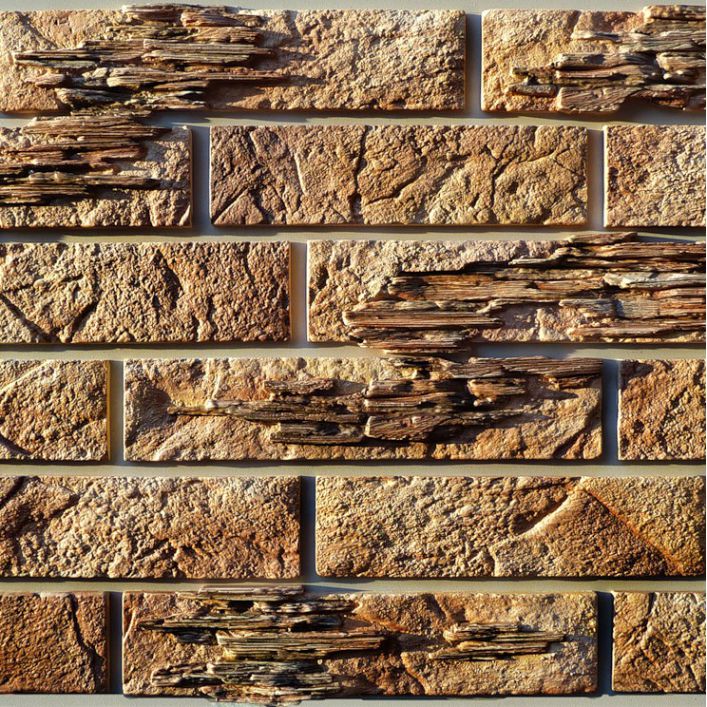
Decorative brick with embossed overlays
- Convex or concave - creates a three-dimensional effect due to such an unusual shape.
This finishing material has several features that must be taken into account when choosing a material for interior decoration. besides him affordable price which attracts consumers, it should be noted:
- Various dimensional solutions.
- To decently save money, you can create a plaster decorative material on one's own.
Manufacturing process
There is nothing difficult in using self-made gypsum products for cladding your walls. By following the simple instructions for making, you can make as many decorative bricks as you need for repairs.
What will be needed for manufacturing?
- Ordinary gypsum dough - you can buy it at any hardware store.
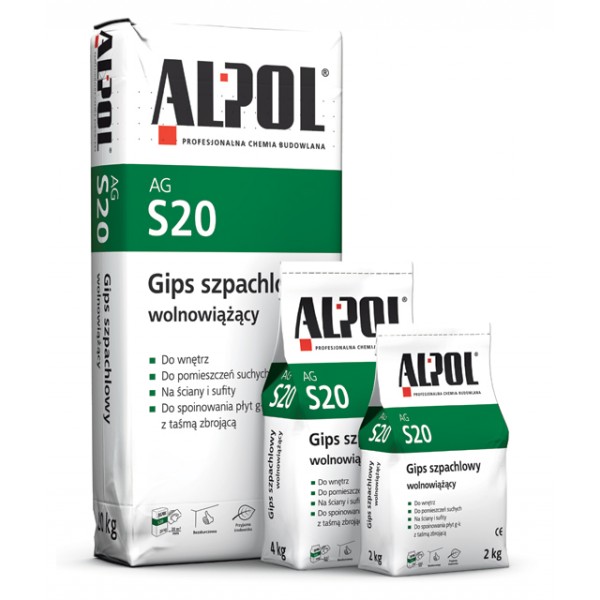
Gypsum for decorative bricks
- To cast each brick, you will need molds - you can make it yourself or purchase it at point of sale. You choose the dimensions yourself, depending on the calculations of the area and the desired design effect.
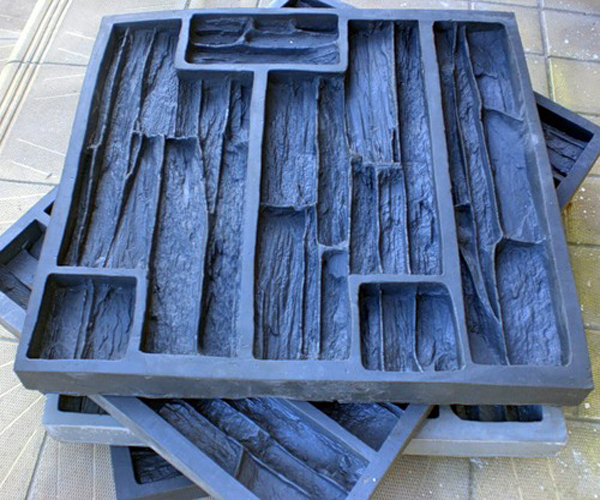
An example of a mold for casting decorative bricks
- Lubricant that allows you to pull out ready product from the form.
- Special hardener for gypsum mortar - to make things go faster, and finished brick It was solid and didn't fall apart.

Hardener for gypsum mortar
- Pigments for coloring desired color- you can leave snow-white, but this shade will not last long enough (dirt will be very visible).
Let's start making!
To knead the gypsum dough, you should gradually pour the purchased gypsum powder into a container with hot (not cold and not warm) water, and stir it constantly. The ratio of water and gypsum must be indicated on the packaging of the powdered mass.
A special construction mixer will help speed up the process as much as possible, and save a lot of time, which can mix even large volumes in a few minutes.
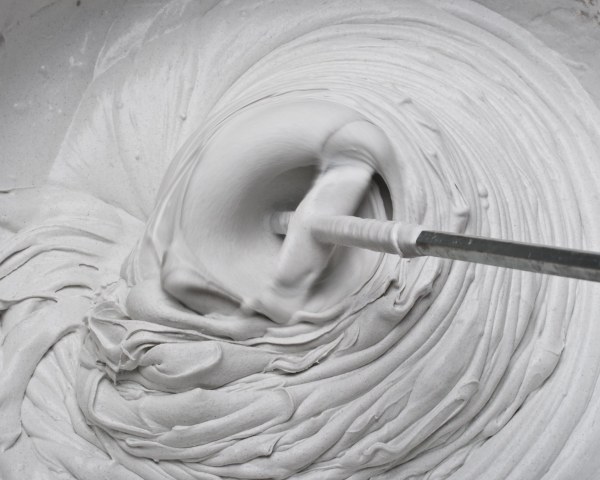
Construction mixer will speed up the process of preparing the solution
If you decide to give the brick a certain color, then the coloring pigment must be added during the mixing process and thoroughly dissolved.
Advice: Do you want to leave beautiful and unusual stains of color on the surface of decorative bricks? Then fill in the color last and stir quite a bit until the multi-colored stripes remain.
After thorough mixing, the solution should be poured into thoroughly greased molds. The setting time will depend on the size of the mold itself, so you should check the readiness after one day of standing in the mold. After complete solidification, you can remove the finished product with a rubber mallet.
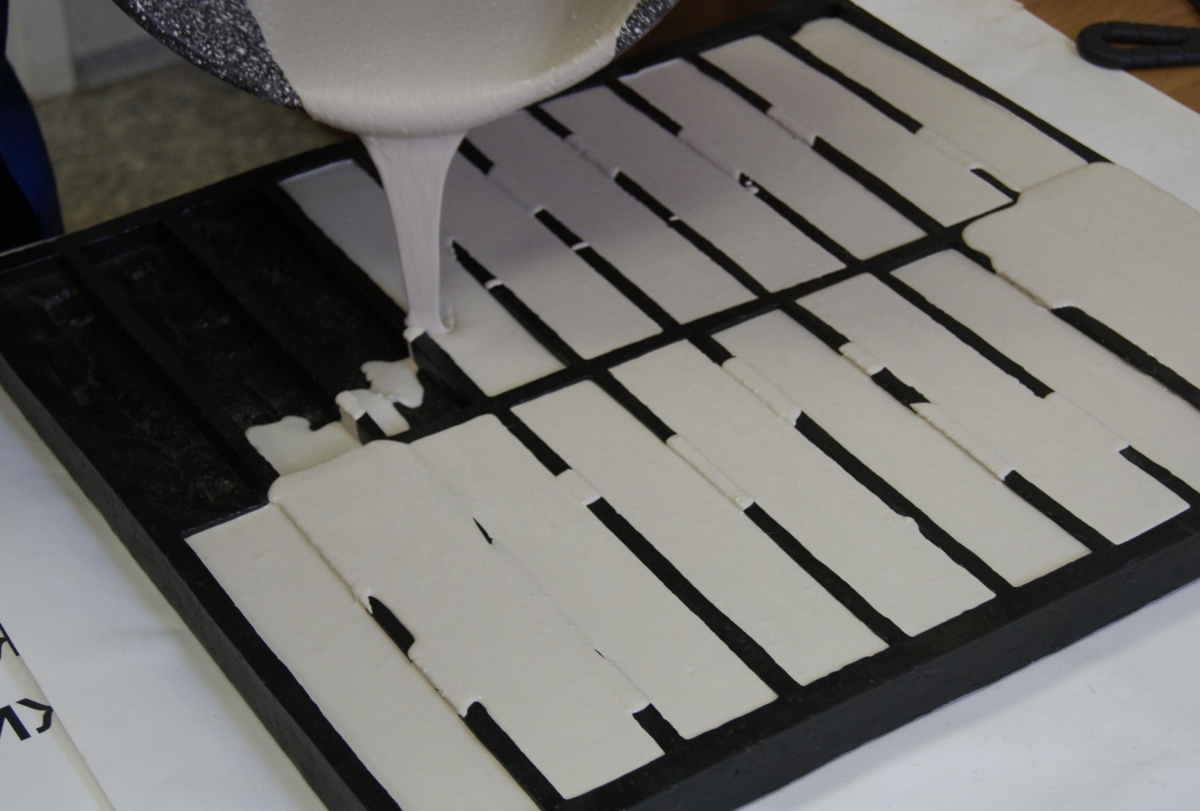
Pouring plaster into a mold
Advice: While the gypsum decorative brick is in shape, it can be varnished or otherwise protective agent. So you do not have to worry about the appearance of damage during installation.
Due to its lightness, ease of installation and excellent external data, gypsum decorative brick is constantly gaining more and more popularity. Many have already made their choice in favor of this material and enjoy a durable and beautiful coating on their walls.

Finished decorative gypsum brick
ceramic brick
Decorative ceramic brick is the founder of this product, that is, the first products were made from ceramics. The oldest, but still in demand material can turn any room into the perfection of taste and comfort.
It should be noted that such a brick practically does not differ in a set of properties and characteristics from ordinary tiles used for cladding long years in all countries and cities of the world.
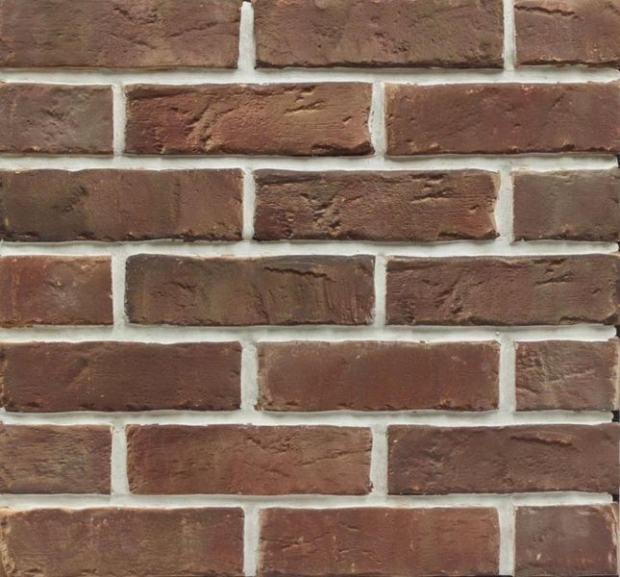
Decorative brick for ceramic interior decoration
Benefits of coverage include:
- Amazing strength and 100% reliability, durability and practicality.
- Ceramics does not allow moisture and various pollutants to pass directly onto the wall.
- Even with heavy loads, such a brick will not deform.
- Withstand any fluctuations temperature regime(from a strong minus to a hot plus in Celsius).
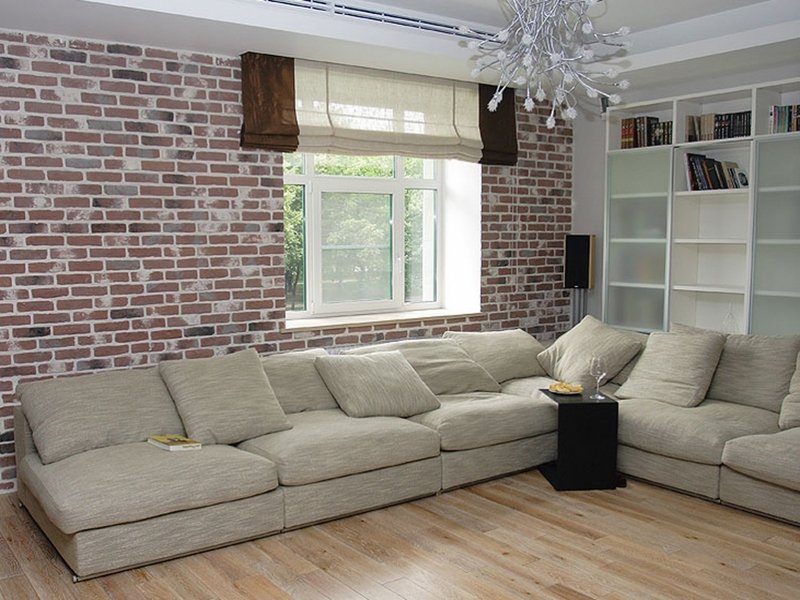
Ceramic decorative brick is durable
Appearance of ceramic decorative cladding in the form of a brick will depend on the external coating (matte, glazed, embossed, convex or concave).
Interesting fact: If on a gypsum brick you can make an original torn surface without any difficulty, then this will not work on a ceramic product. Therefore, this type of material is practically not found in nature.
Bricks for interior decoration from porcelain stoneware
The most durable, durable and retaining their original appearance are decorative bricks made of ceramic granite. This material is distinguished by a manufacturing process that can only take place under production conditions.
The difference between ceramic and porcelain stoneware is the addition of gypsum mortar granite chips. After kneading, there is a double firing, which adds amazing strength, in an oven with high temperatures.
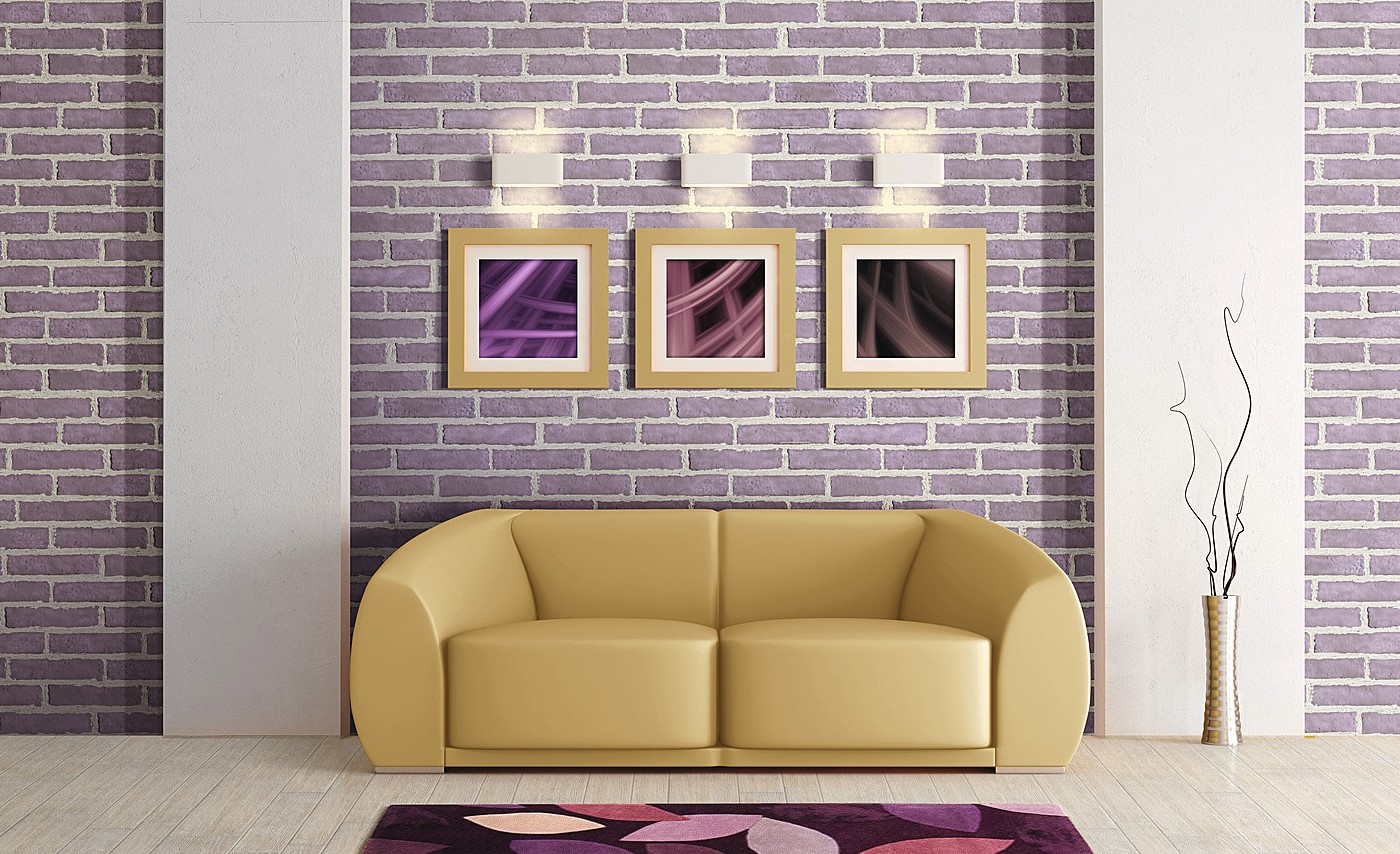
Decorative porcelain stoneware brick
Ceramic granite brick has multiple positive properties, including:
- Frost resistance and moisture resistance - neither strong temperature changes, nor water falling on the surface can spoil the excellent appearance.
- Due to the high-quality protective layer, the brick will not absorb dirt - just clean it with a damp cloth with detergent and the finish looks like new.
- Choice colors and shades are simply amazing - the stores offer a huge variety of colors that satisfy any tastes and preferences.
- Various sizes allow you to create your own unique design interior.

Porcelain tile under a brick has a high moisture resistance
It should be noted that the average service life declared by manufacturers is at least thirty to forty years, which allows you to forget about repairs for the rest of your life.
Important: In addition to the fact that porcelain stoneware decorative bricks can be used for wall cladding, it is often used for flooring. The material will look especially harmonious and beautiful in the kitchen, in the bathroom or toilet, in the corridor or hallway, as well as in the dining room (if there is such a zone in the house).
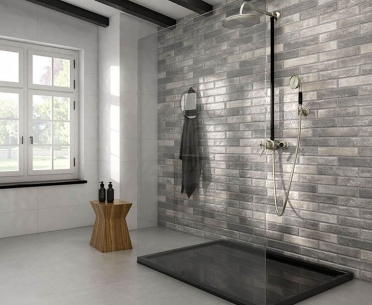
Ceramic granite brick in the interior of the bathroom
Clinker decorative brick
It should be noted that this species decorative coating walls are particularly beautiful - it is as similar as possible to a real brick. The material is quite dense, so it is often used to finish areas with frequent temperature changes: kitchens, fireplaces, loggias and verandas.

Clinker brick in the interior of the living room
It is impossible to produce this product at home, since ovens with a temperature of more than 1200 degrees Celsius are used in production. It is only through such heat treatment of clay that an excellent material is obtained.
Important: Don't forget to get special glue. It is desirable that the manufacturer of the decorative clinker brick And adhesive solution coincided - this way you can achieve maximum adhesion to the surface.
Also pay attention to the same batch of all purchased material so that there are no discrepancies in shades and texture.
Brick decoration and style solutions
Brick-like finishing gained great popularity after the transformation of industrial premises into residential ones became fashionable. Such apartments were difficult to revet with wallpaper or plaster. To do this, one would have to commit real blasphemy - to demolish all the walls and rebuild them. Of course, no one did this, and the brick began its majestic march to the top of popularity. "Industrial aesthetics" is the founder of the popularity of decorative bricks.
In this article, we will consider other design solutions and styles that successfully apply the design and creation of brick-like elements.
Loft
It is worth telling more about the loft style, which appeared precisely during the settlement of industrial buildings made of real brick. In the middle of the twentieth century, this direction became the most popular and popular. Many owners of regular apartments were so inspired after visiting loft housing that they began to refurbish their own in the same style.
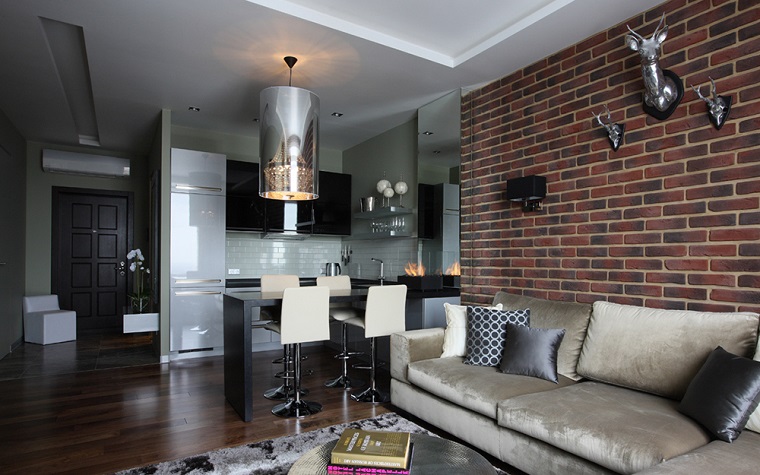
Decorative brick will harmoniously fit into the interior in loft style
Given fashion trend and now does not remain aloof. To comply with all style features, the owners need to leave the piping open and under the ceiling or along the walls, erect beams, and, of course, make brick walls. In order not to have to demolish old surfaces, residents everywhere use precisely decorative look bricks.
With the advent of such cladding, it has become much easier to turn your apartment or house into a real loft. But other interior styles can be perfectly complemented and transformed with decorative brick stone.
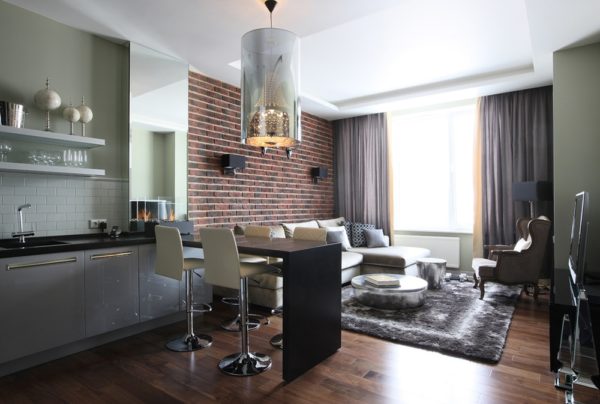
Decorative brick for interior in loft style
Anyone who wants to create such beauty without moving to industrial building or a room, you can not do without brick walls. That is why the material we are considering is incredibly popular, popular and versatile.
Country
It should also be noted original style country, in which it is also excellently used brickwork. Such an interior is perfect not only for a home, but also will decorate a cottage or a hunting lodge. The apartment can also recreate a Western American design, as decorative brick is great for cladding and ordinary walls.
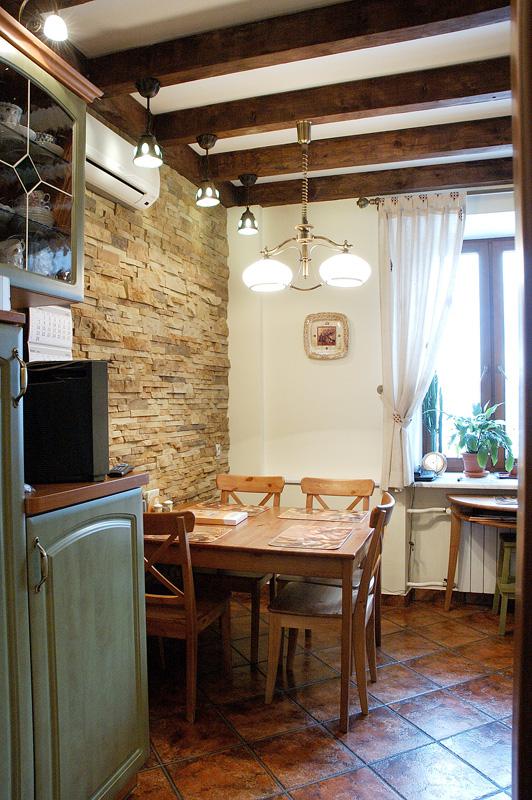
Decorative brick for interior in country style
If earlier bricks were left in the hunting house purely for economic reasons, so as not to waste either effort, time or money on finishing, now they are specially creating an imitation of such natural coating. Many adjusted the design of the premises precisely because of the savings on creating cladding, because in country house do not hold receptions, and come extremely rarely.
Country style allows you to create your own special atmosphere, which speaks of the remoteness of housing from the bustle of the city.
Gothic
The next style in which decorative brickwork can be introduced is Gothic. Neo-Gothic is also suitable for making such a design move. As you know, this style of interiors existed during the Middle Ages. Knightly castles and monasteries were mainly built of brick, and the walls simply could not be lined with special materials. All the ancient rulers could think of was to cover the walls with cloth or tapestries.

Wall decoration with decorative bricks for the interior in the Gothic style
Modern designers offer to add gothic touches to give majesty and pristine beauty natural stone. Most often, in such an interior there are only elements with brickwork: the design of a part or only one wall, columns and arches can also be faced decorative stone"under the brick".
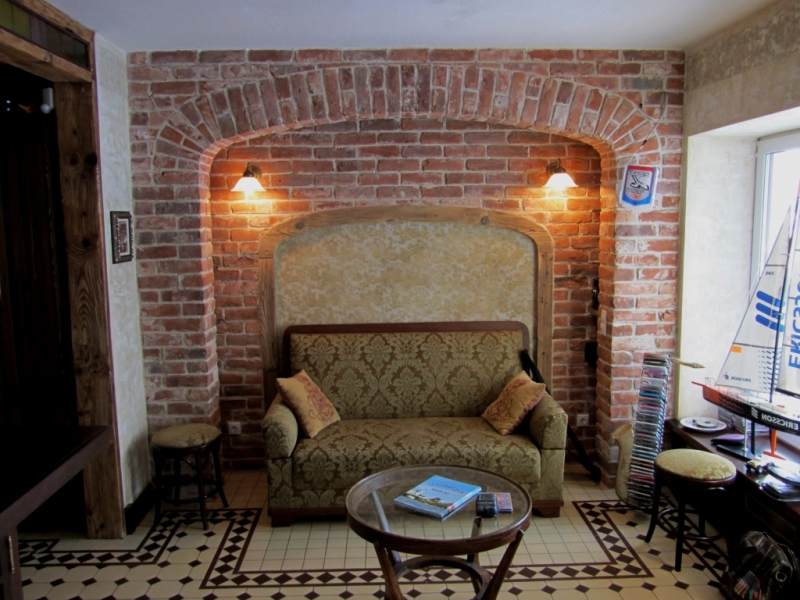
Facing the arch with decorative bricks
Such a contrast creates really impressive views: for example, a wide, massive bed with a canopy made of silk or velvet will look great against a brick background, and a crystal chandelier is suspended against a background of lancet arch made of aged brick stone.
Minimalism
Who would have thought, but in minimalism, decorative brick looks no less chic and impressive than in other styles already listed. For such an interior, materials of brown, red or brown color should be selected - the shades will be perfectly combined with floors, furniture and walls in white, black or gray. Designers claim that brickwork in this case will perfectly emphasize the main theme of design - the urban essence.
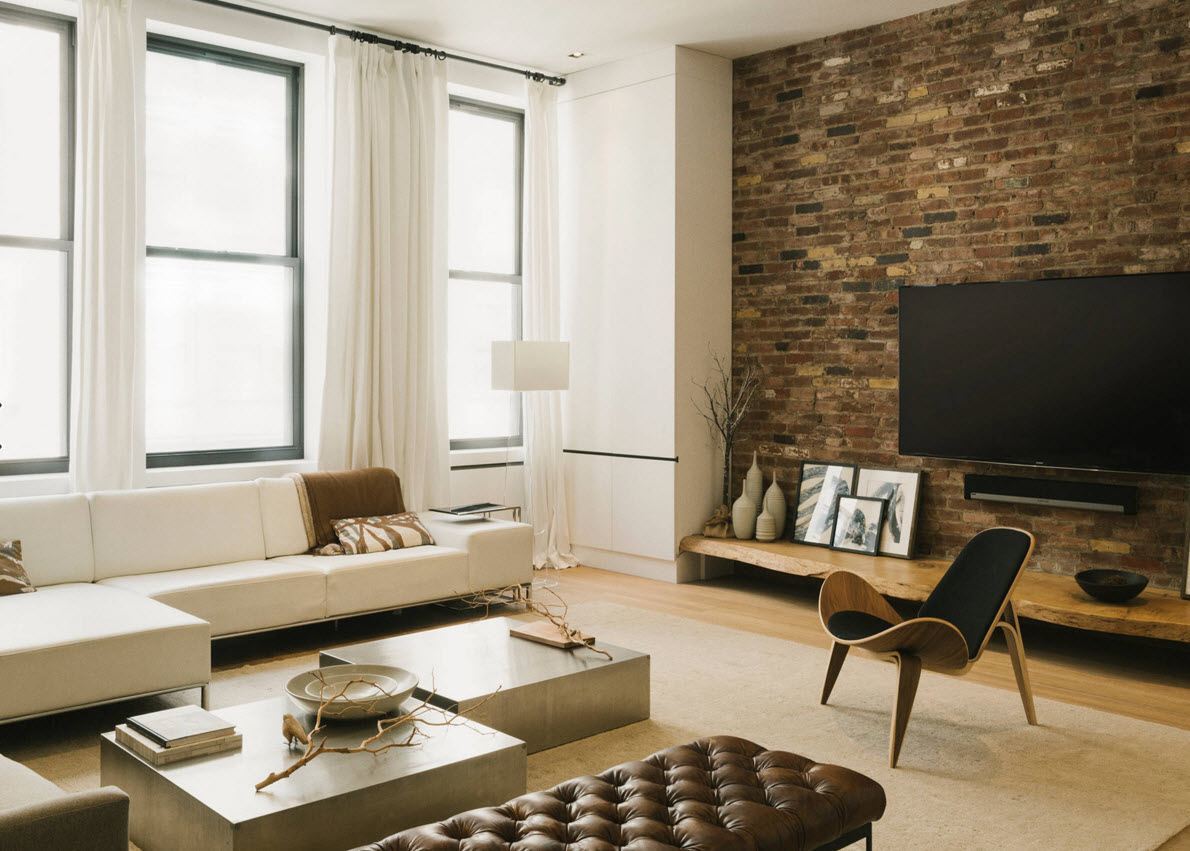
Dark decorative brick for a minimalist interior
If you do not want to create such a bright image, then in minimalism you can also apply a neat white color of decorative brick for interior decoration. Or other light shades that bring only a little variety due to their non-standard, more rhythmic texture.

White decorative brick for an interior in a minimalist style
The best use for decorative bricks in any interior is to create unique accents. It is best to finish a separate wall, for example, in the bedroom behind the bed or in the living room behind the sofa or TV. In the dining room, decorative brick will look great on the wall near the dining table.
In any case, no matter how you decide to use a decorative brick in your interior, it will last a long, reliable service, and give you a lot of pleasant evenings. With the help of this finishing material, you can create comfort, majesty, uniqueness of any room. Your interior will be irresistible and original with minimum investment time, effort and money.
Photo gallery - decorative brick for interior decoration
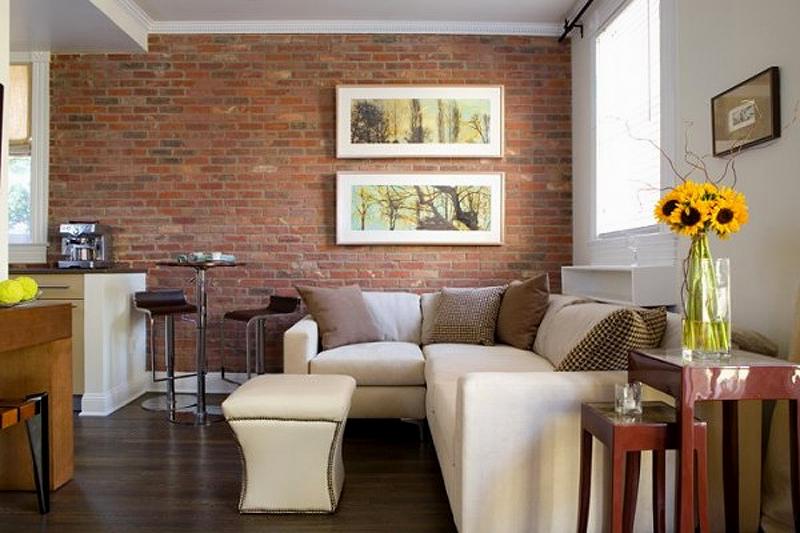
![]()
![]()
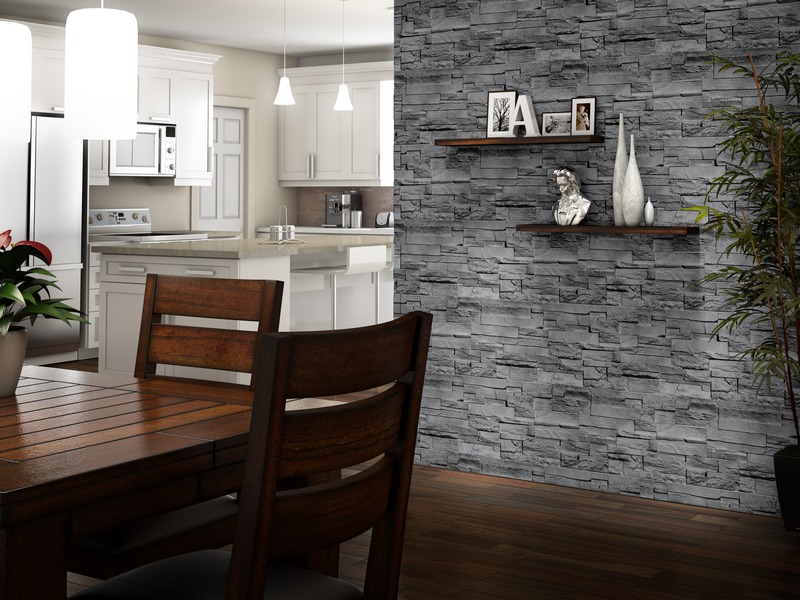
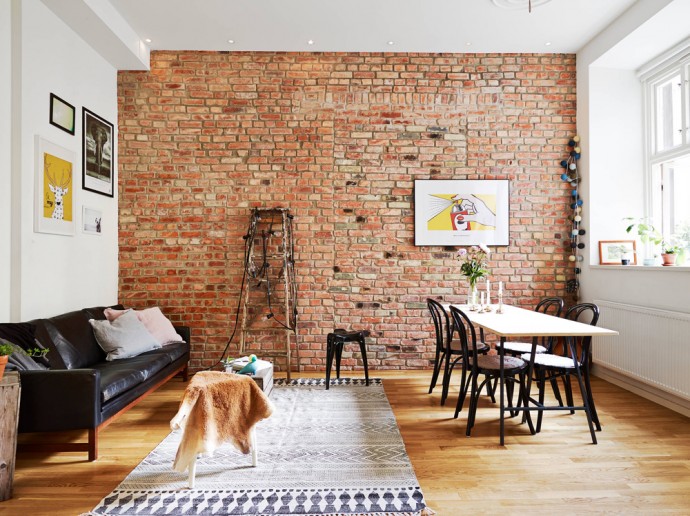
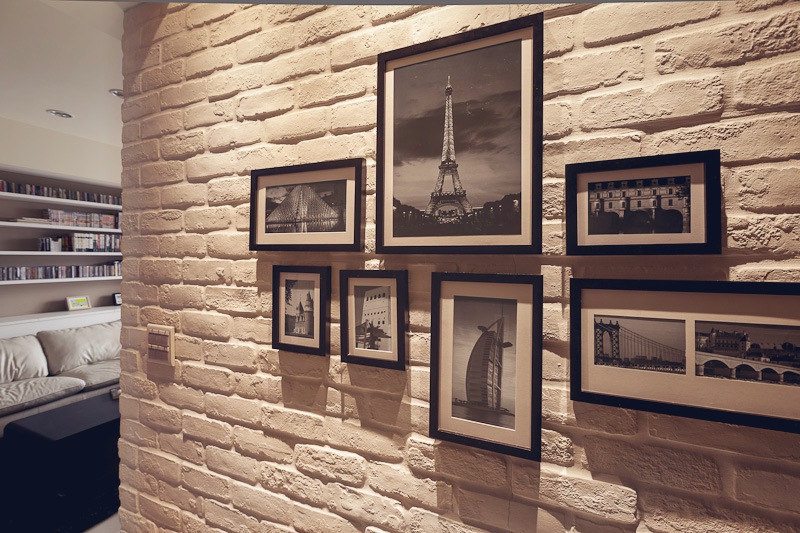
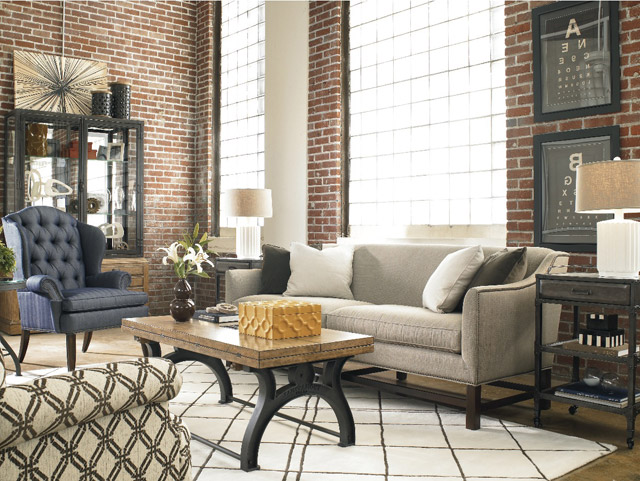
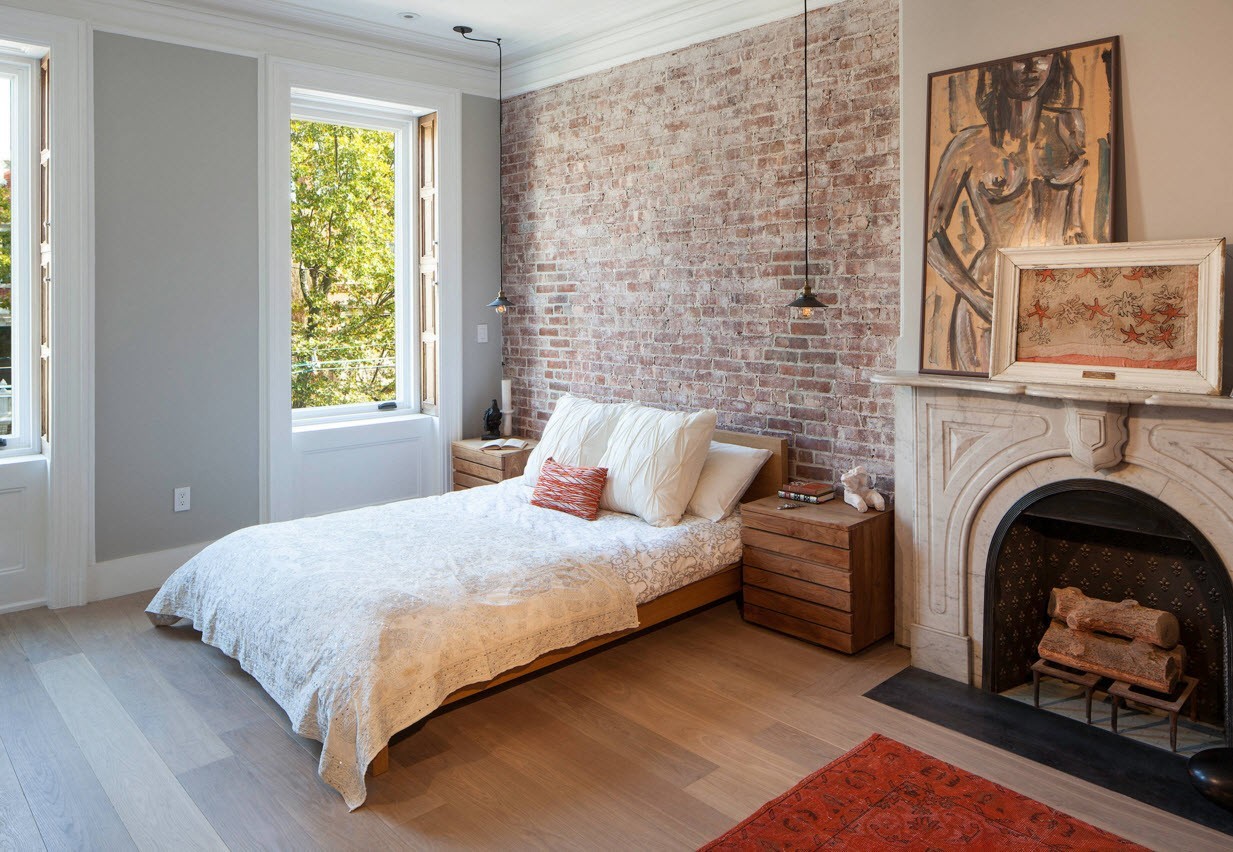

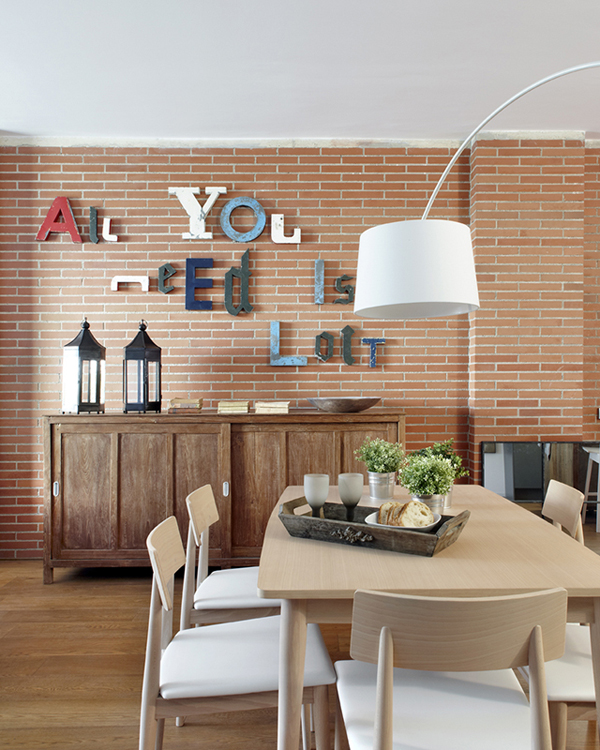
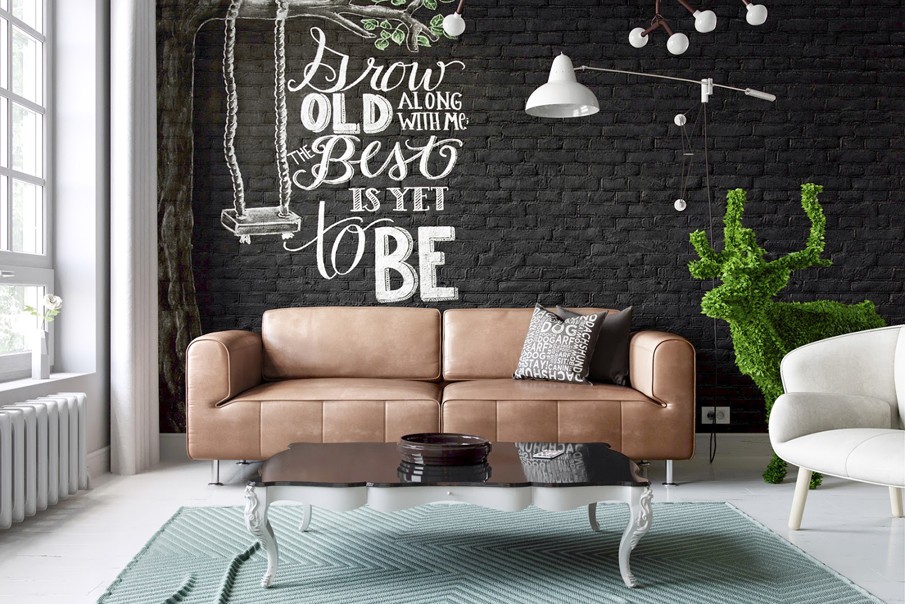
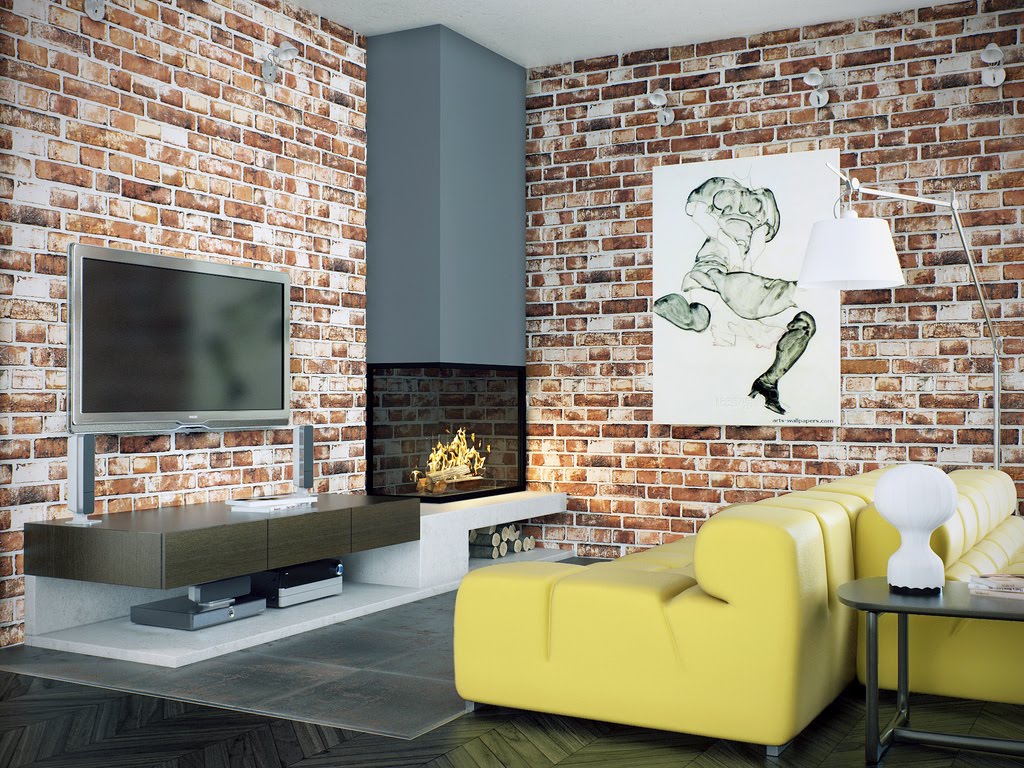
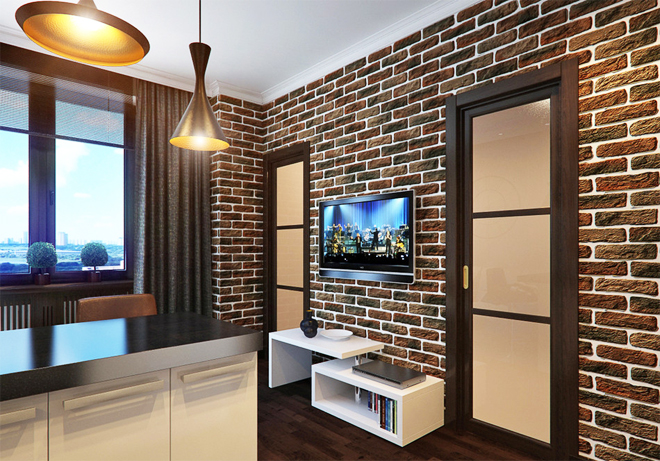
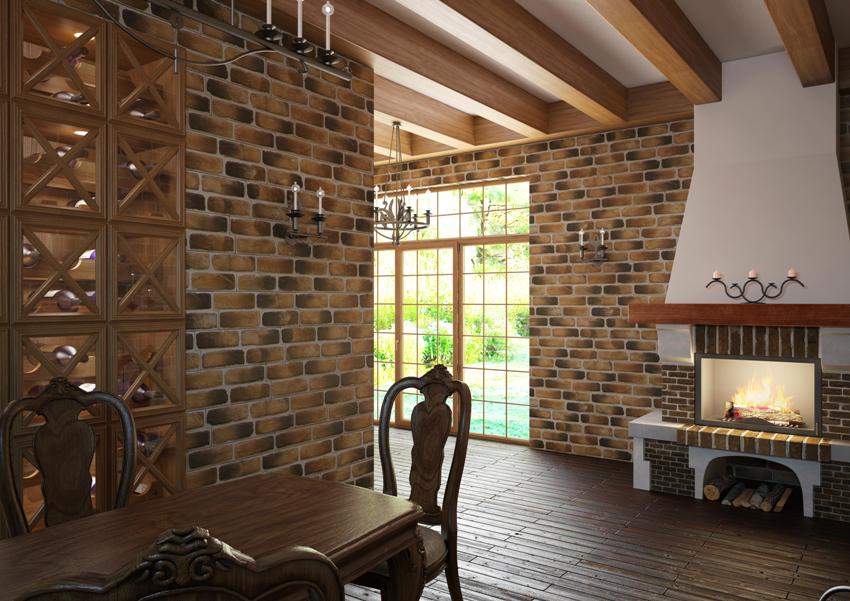


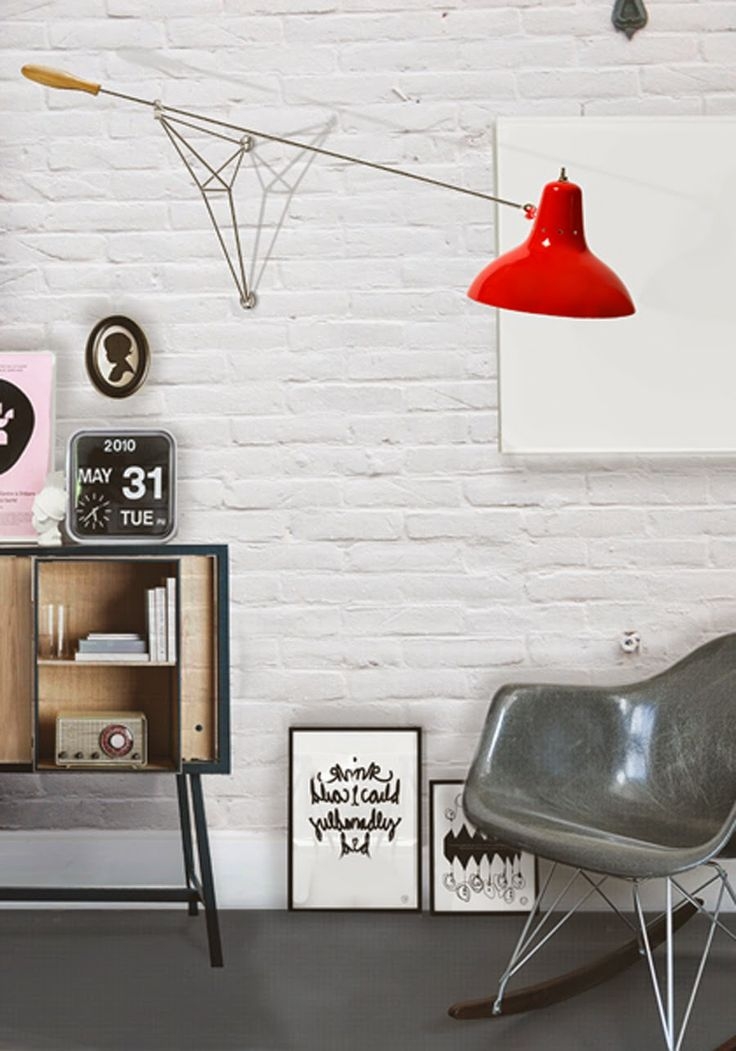

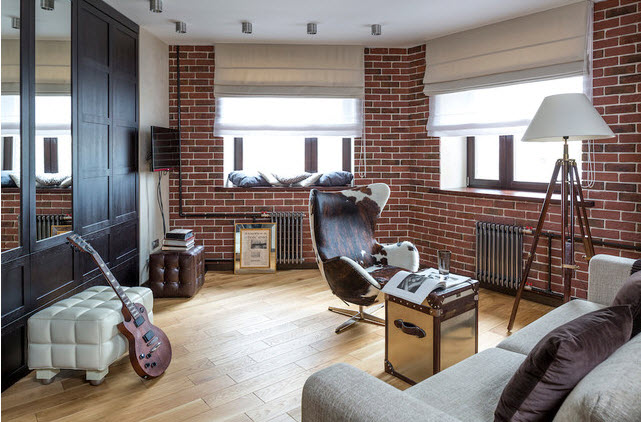
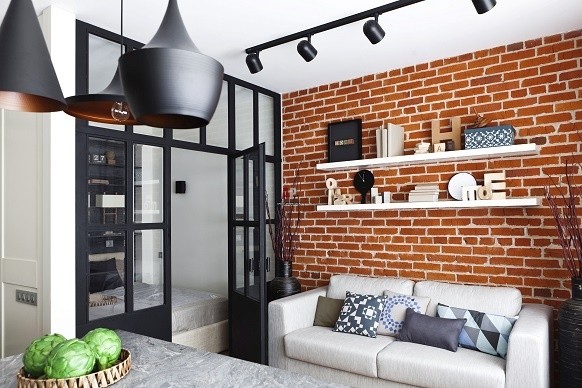
![]()

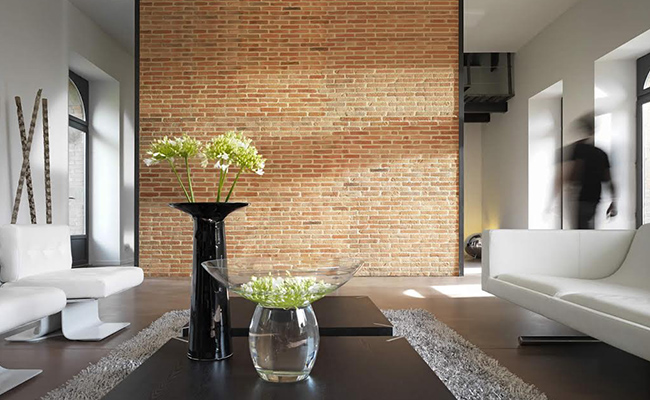
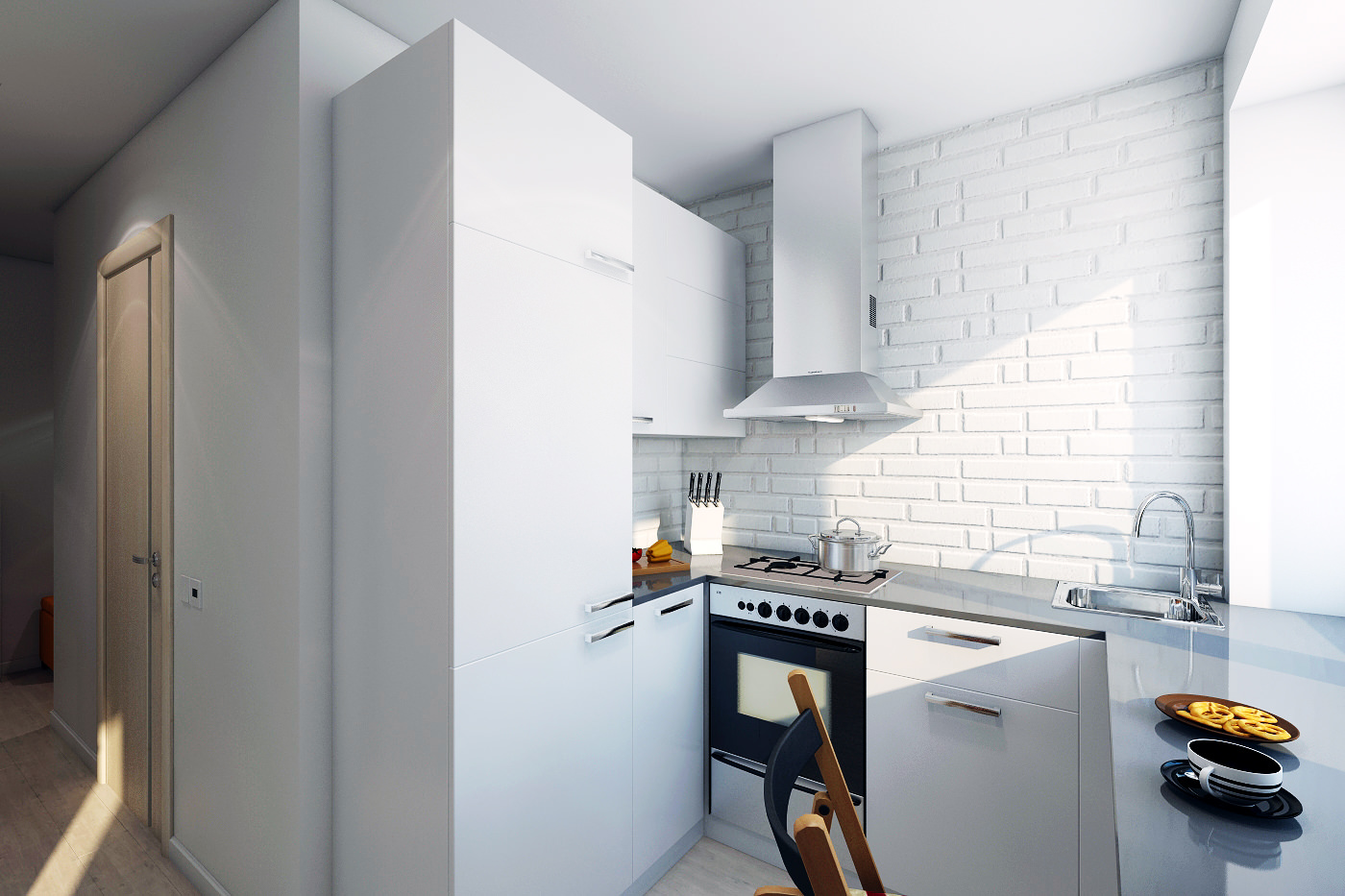
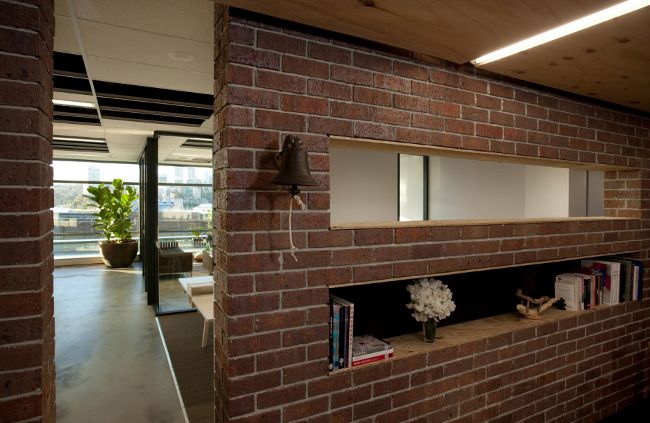
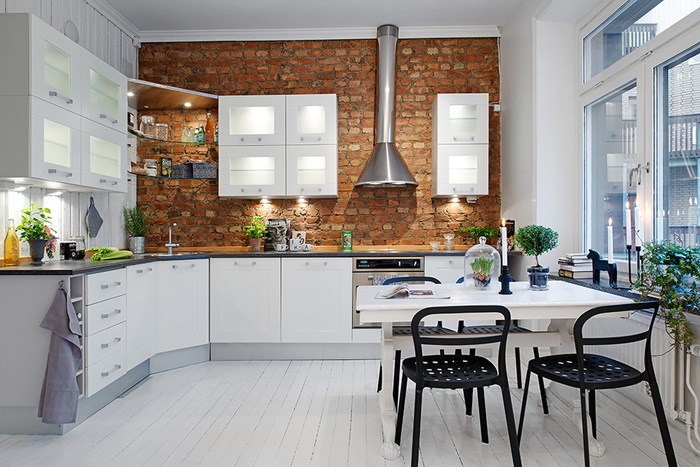
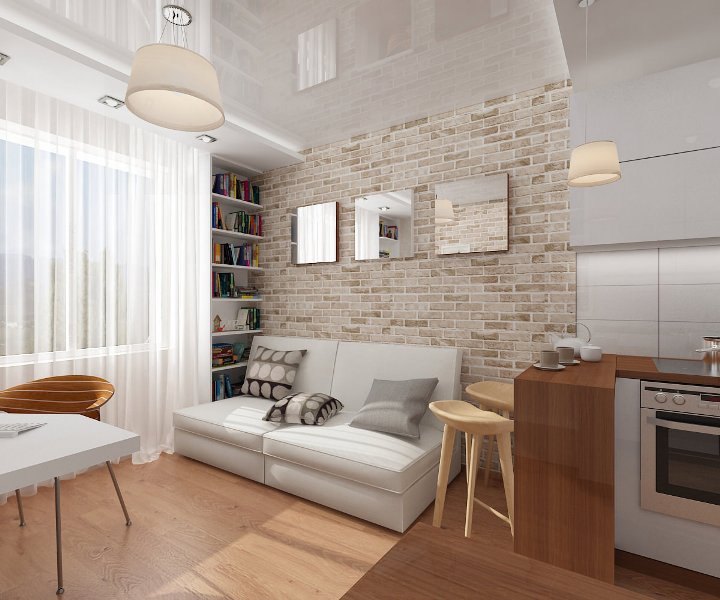
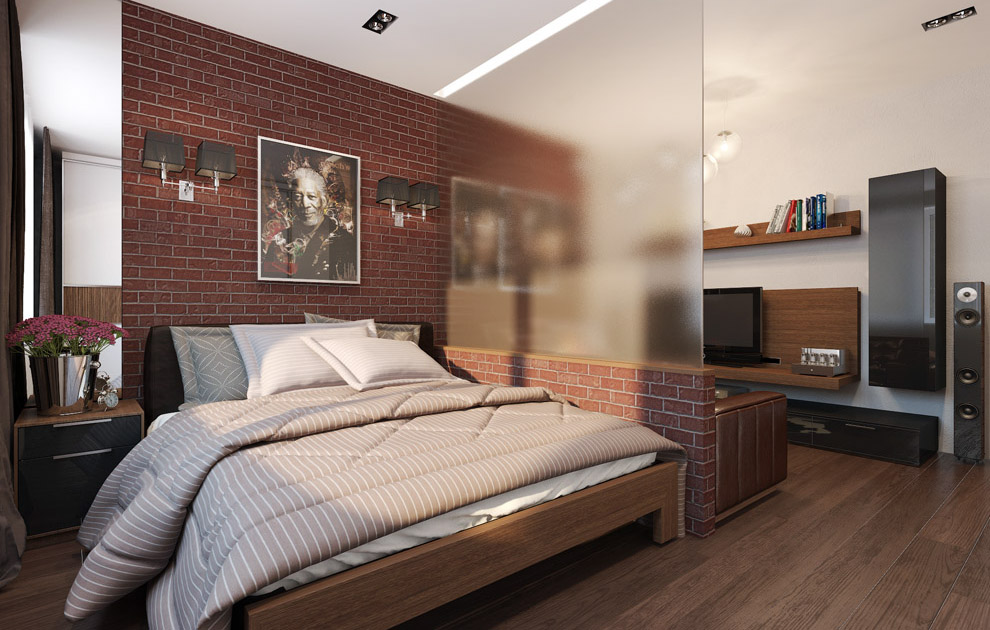

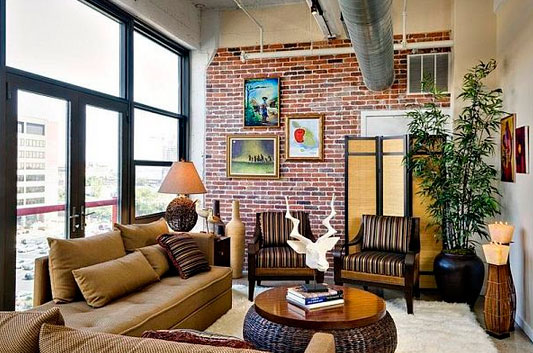

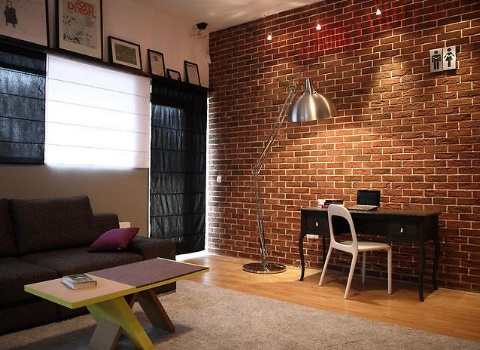
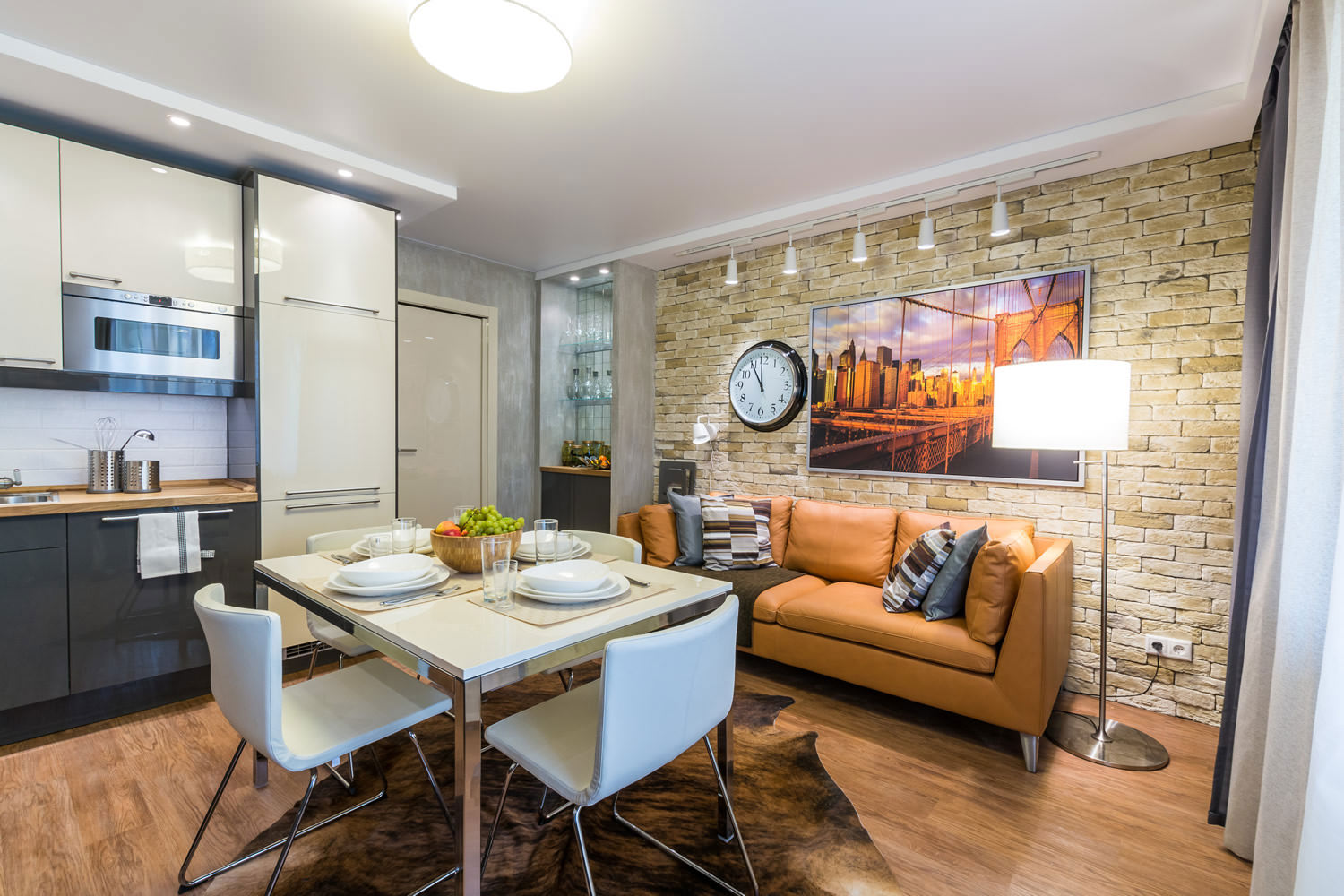
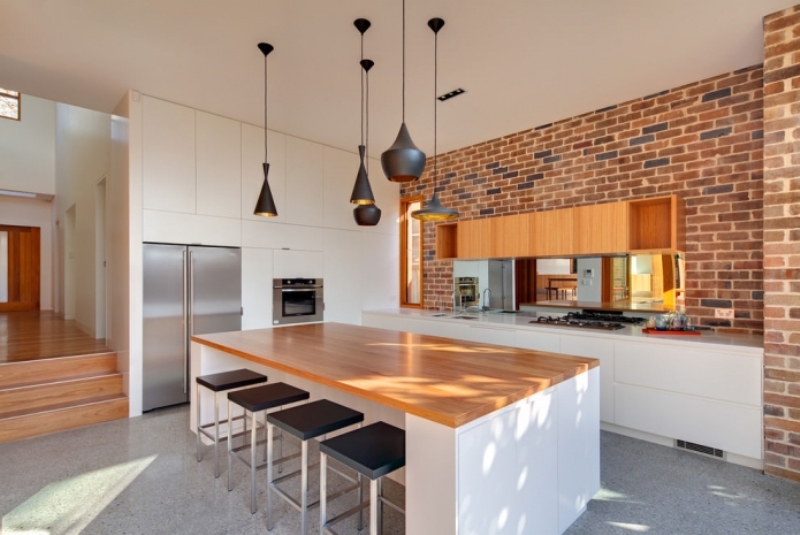




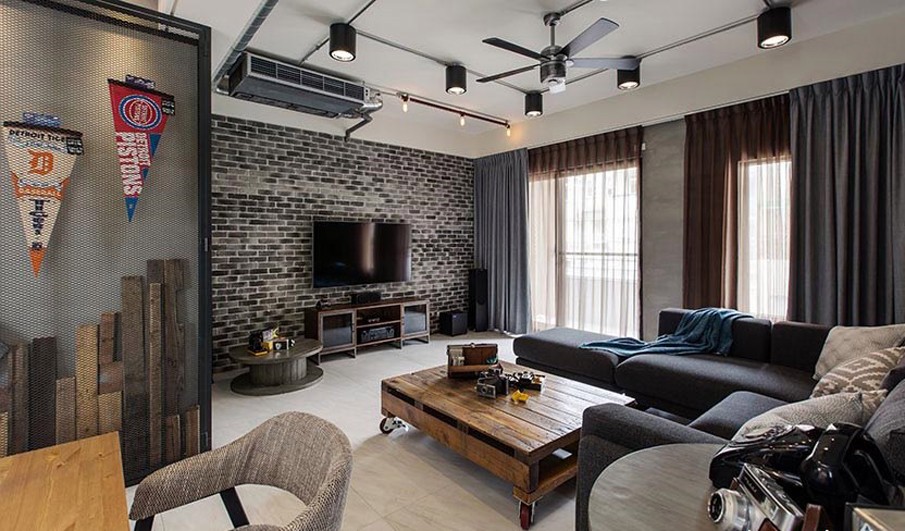
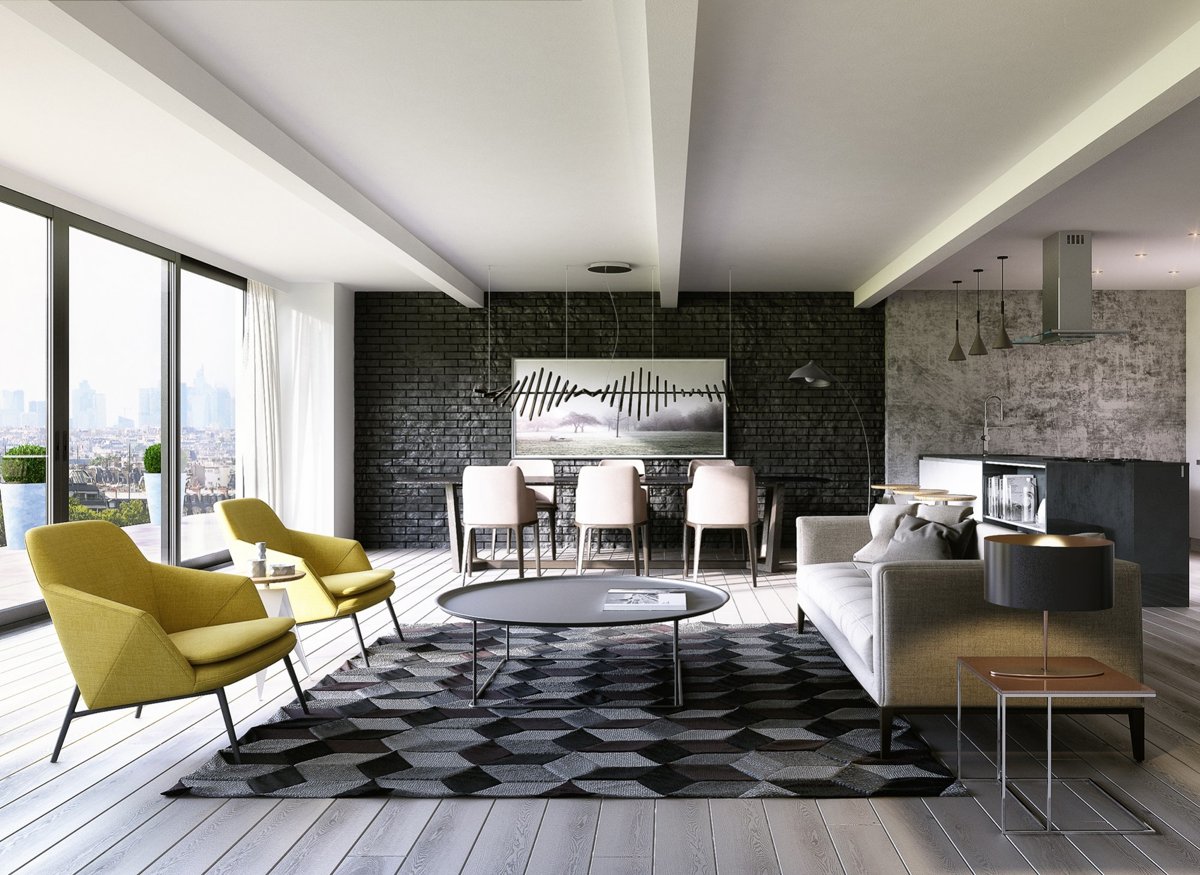

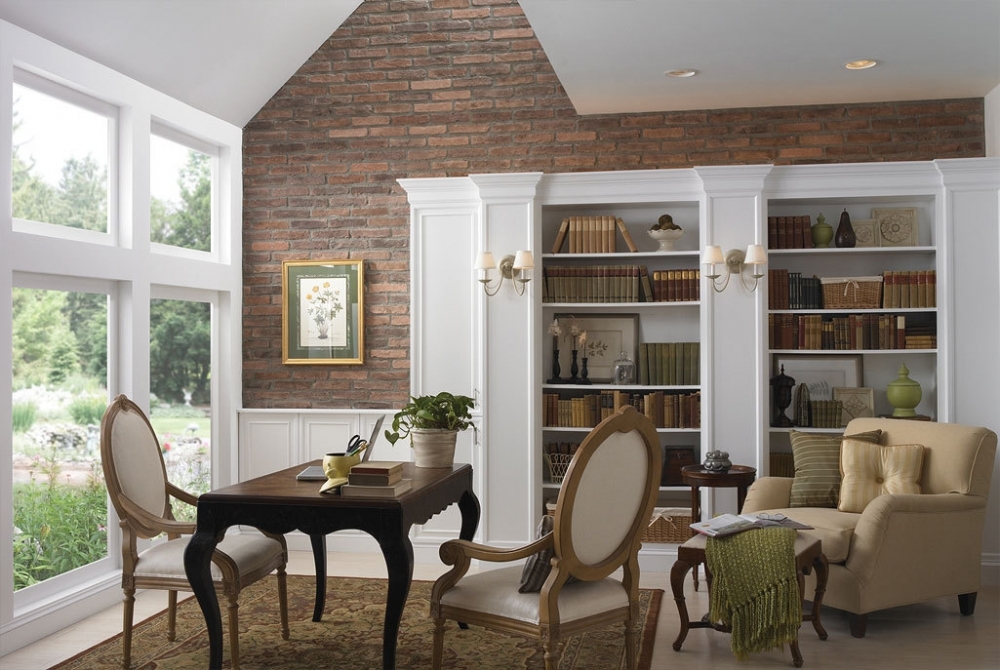


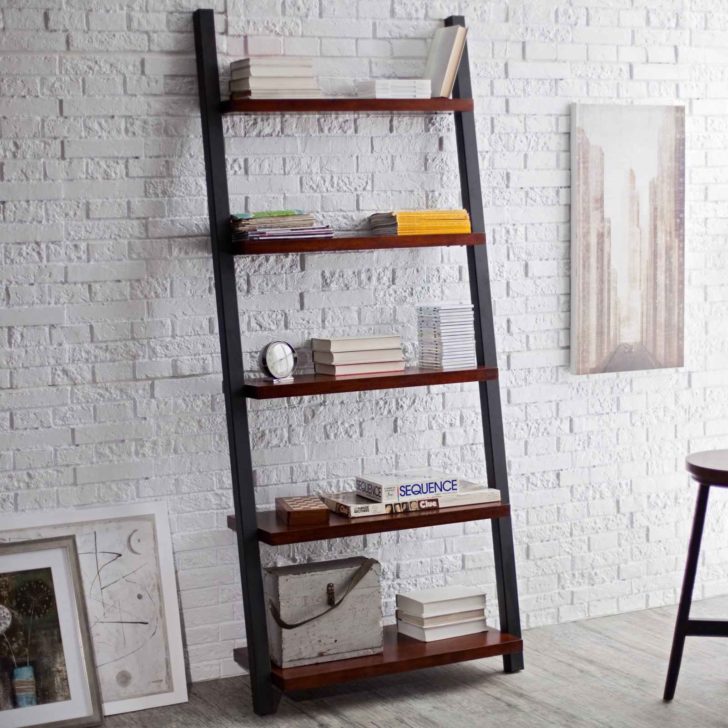
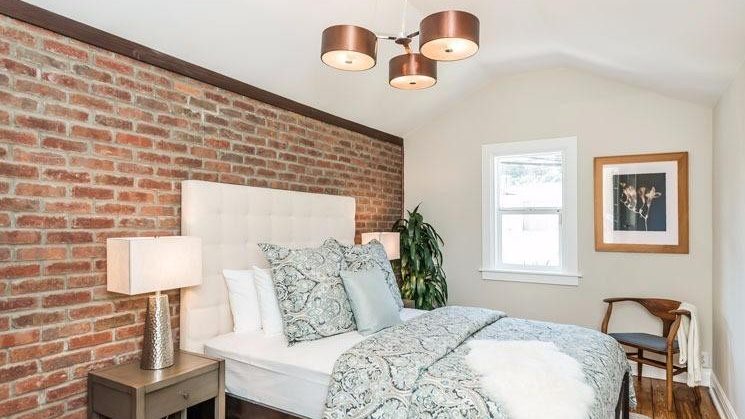
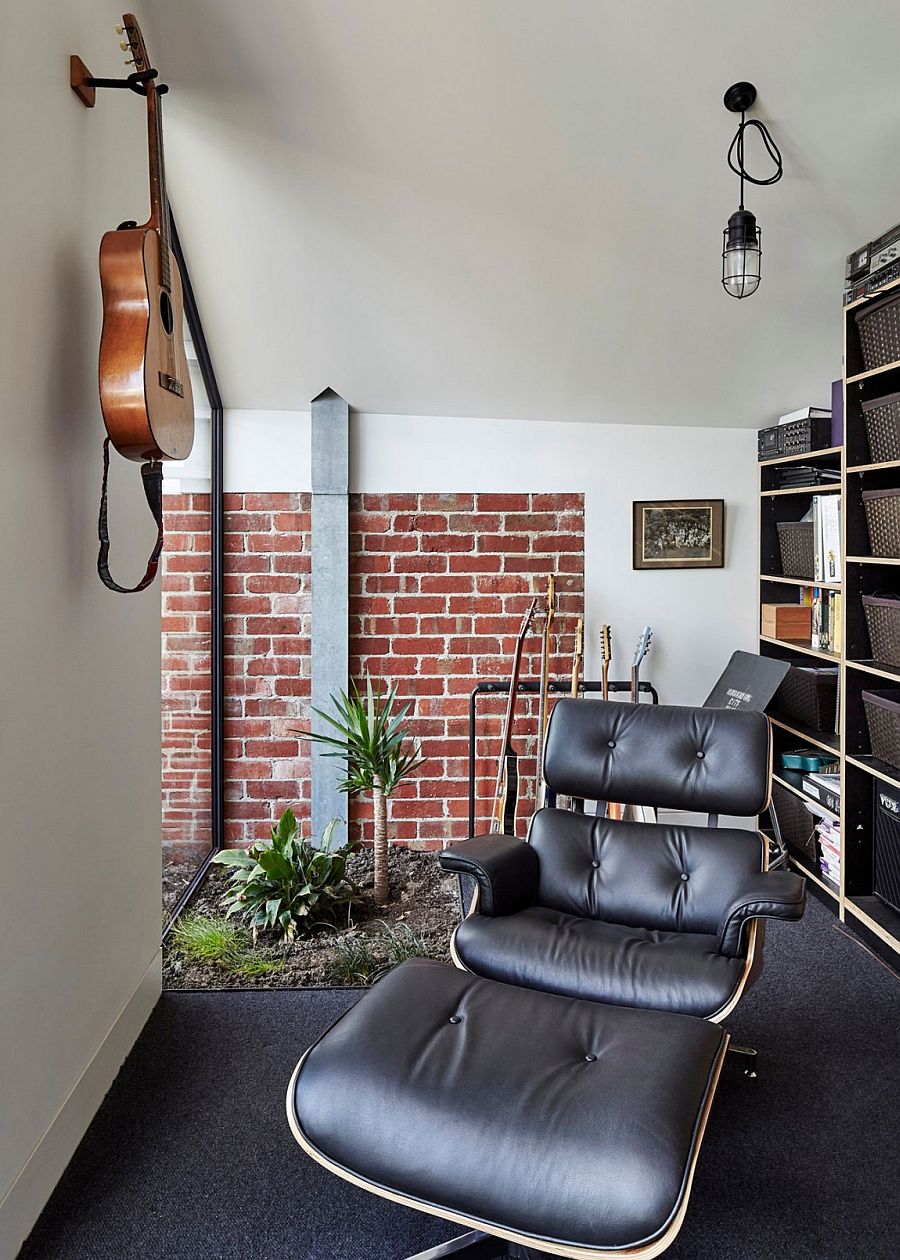
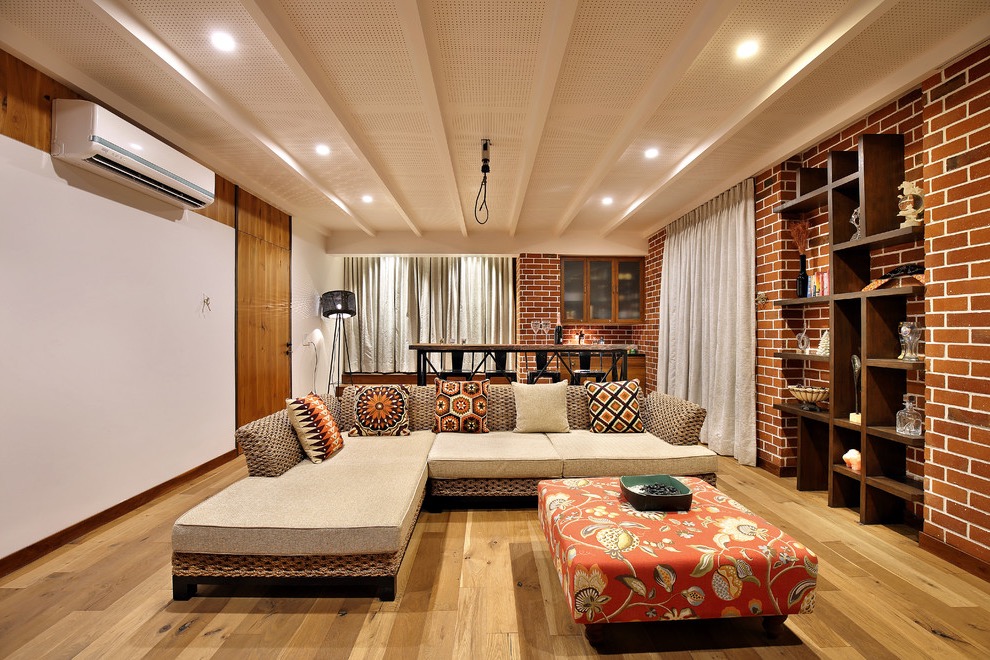
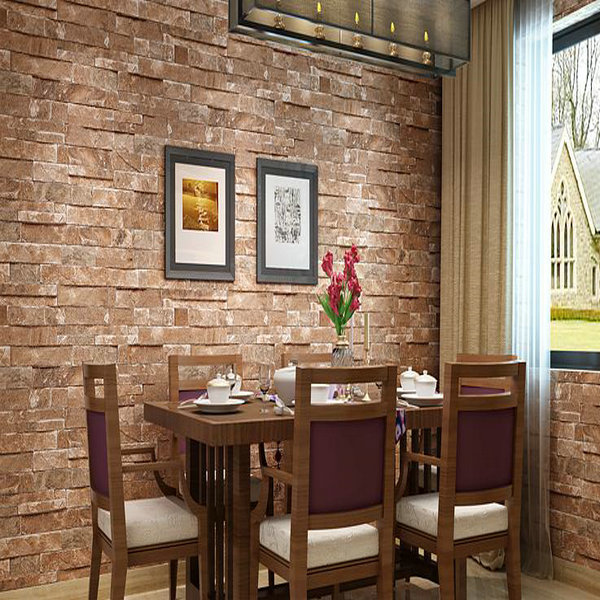
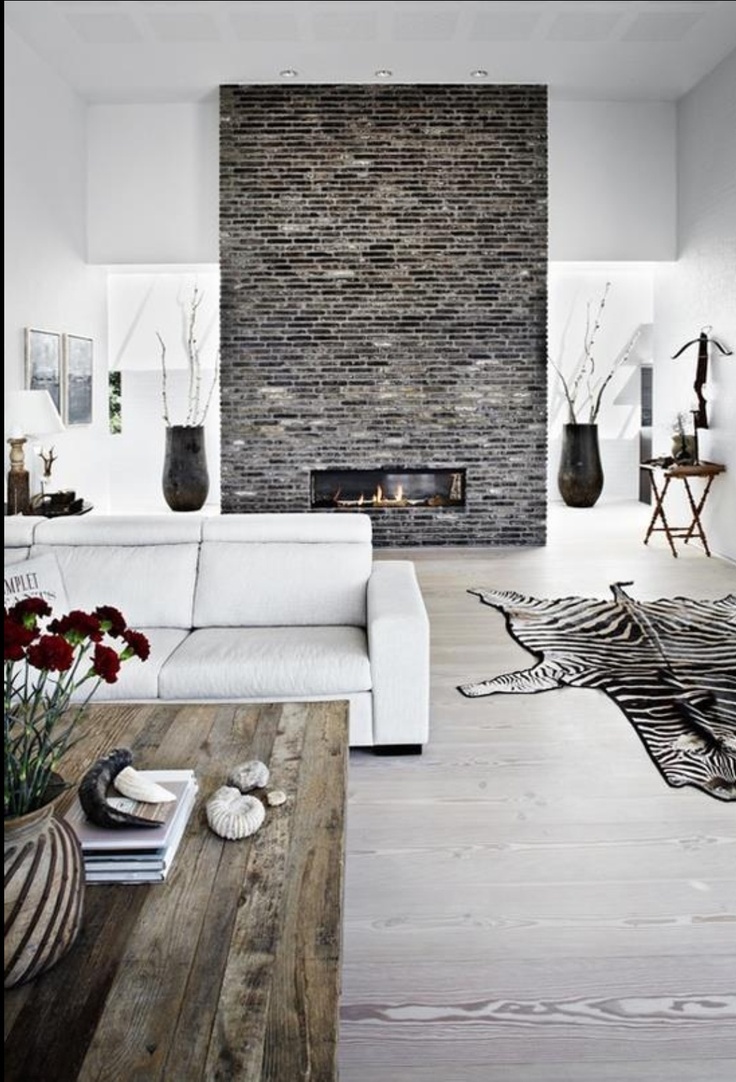
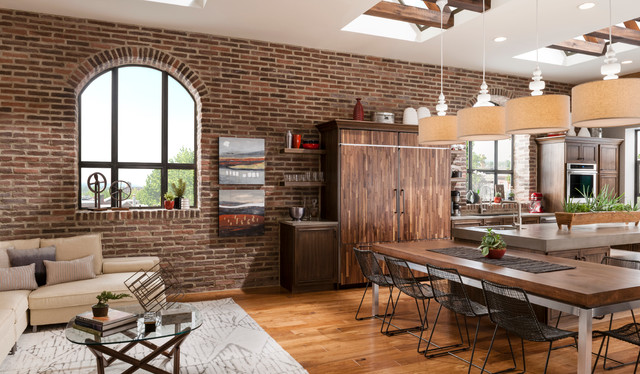
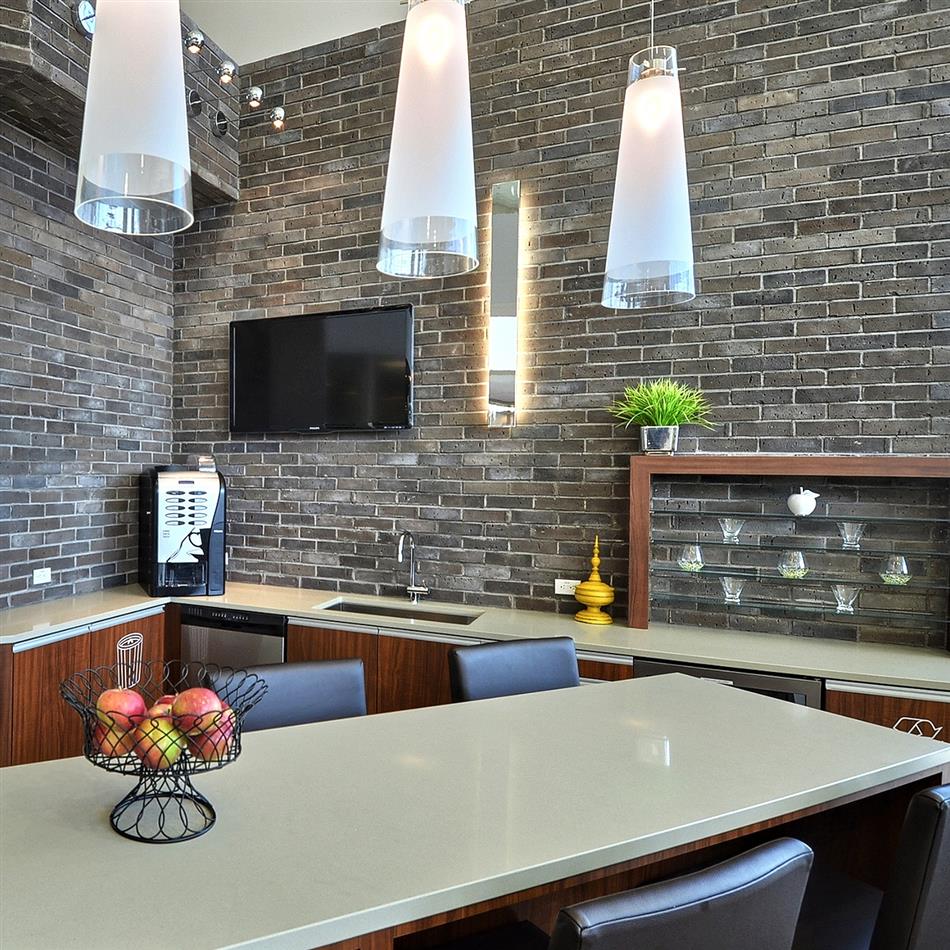
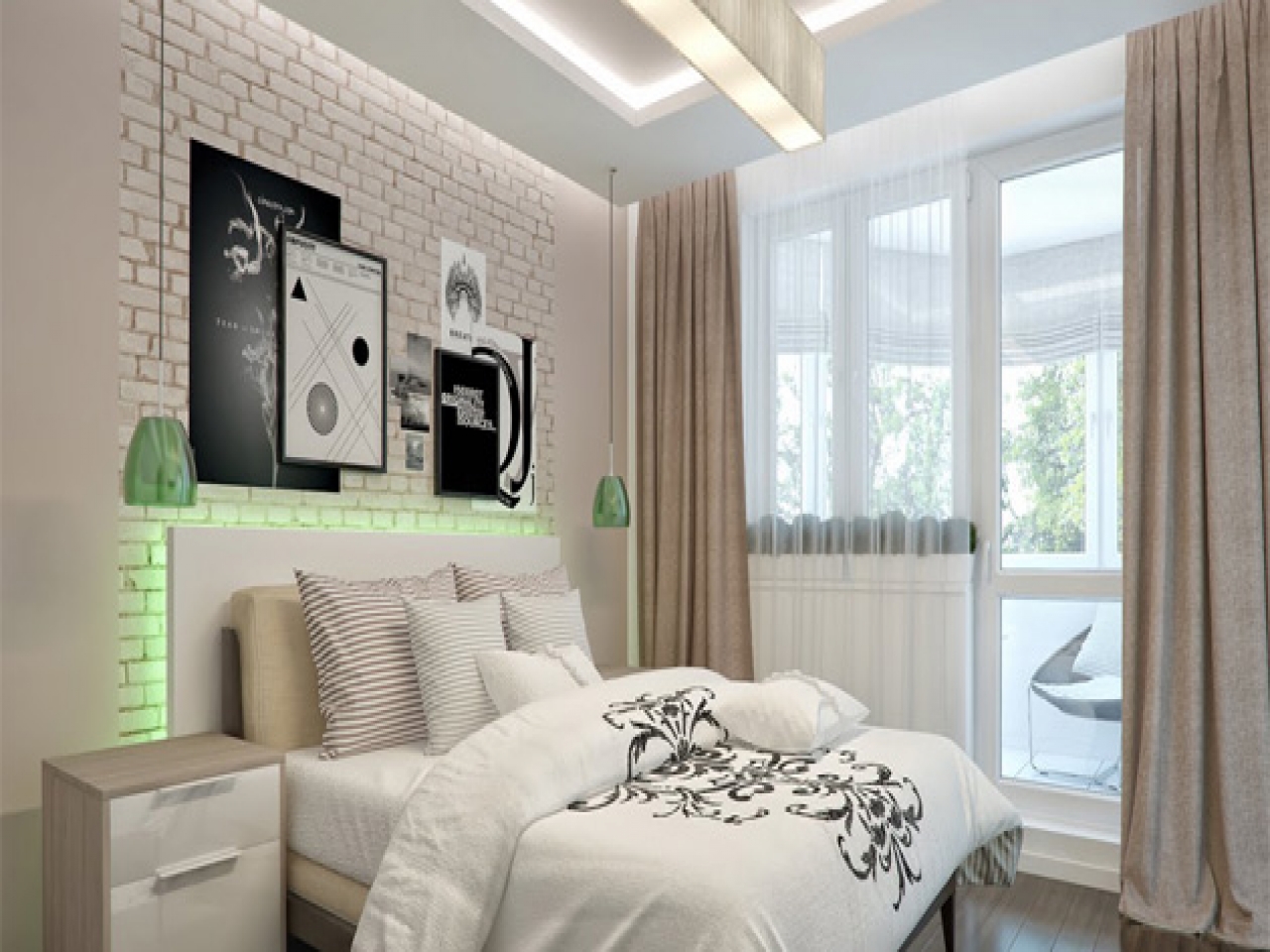


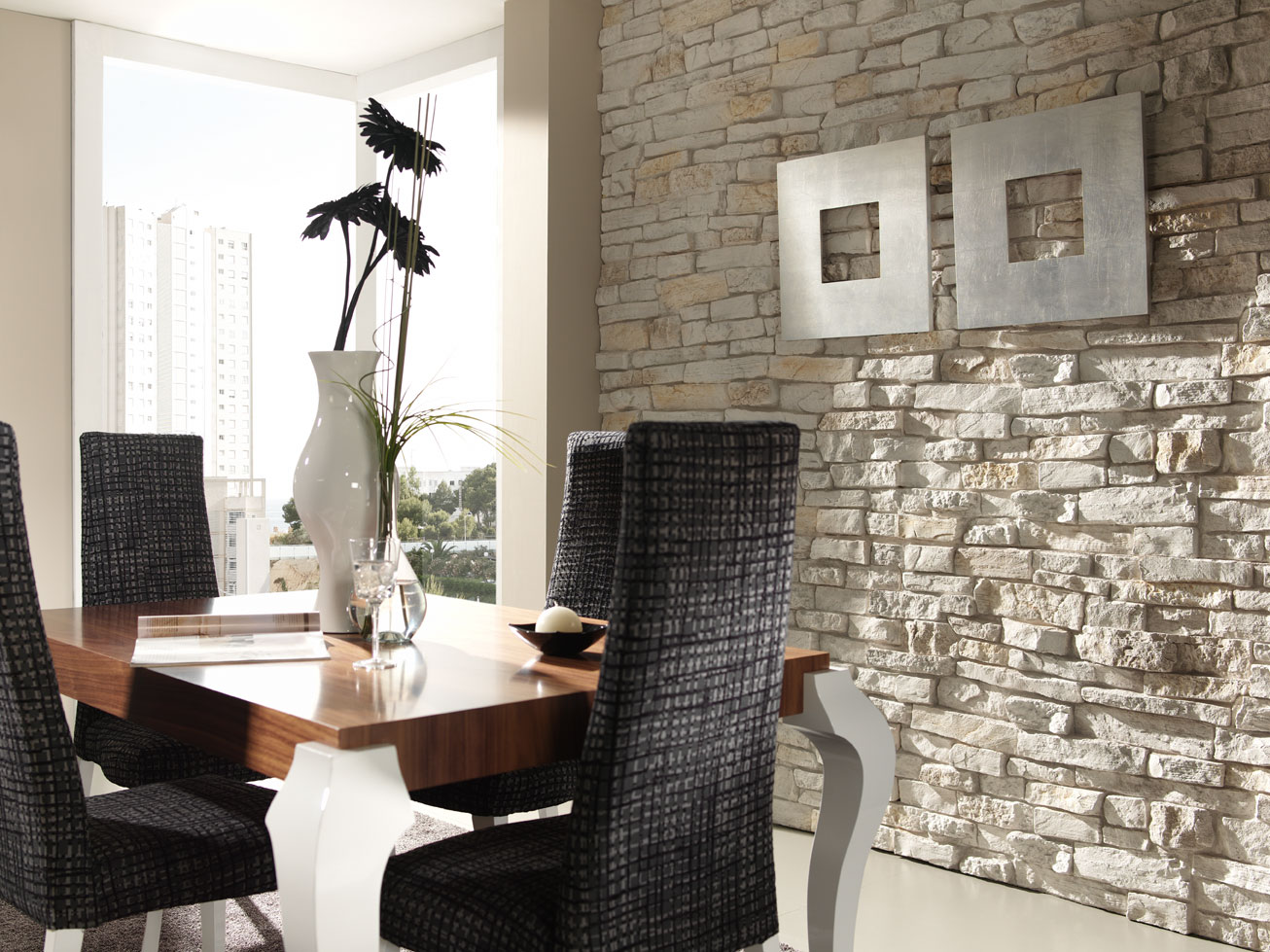
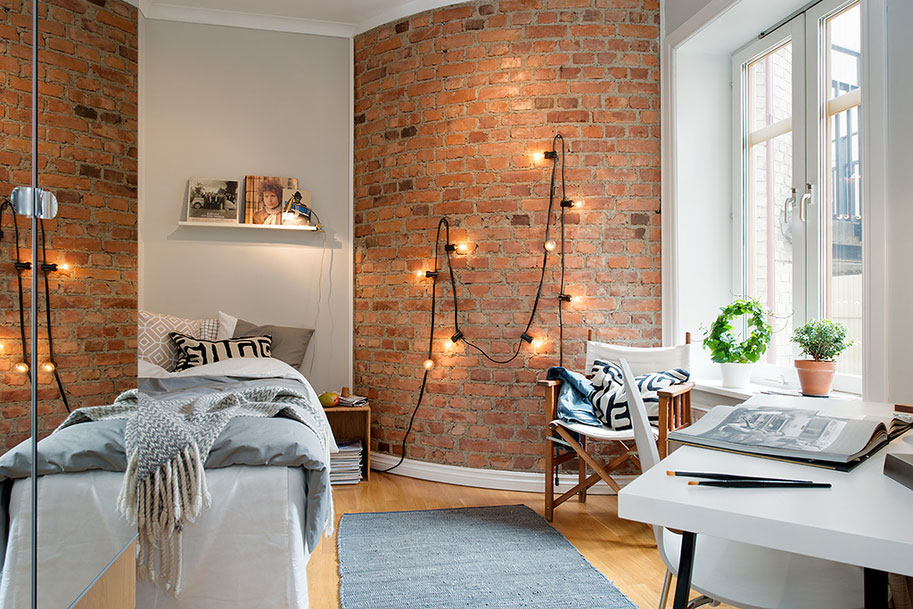
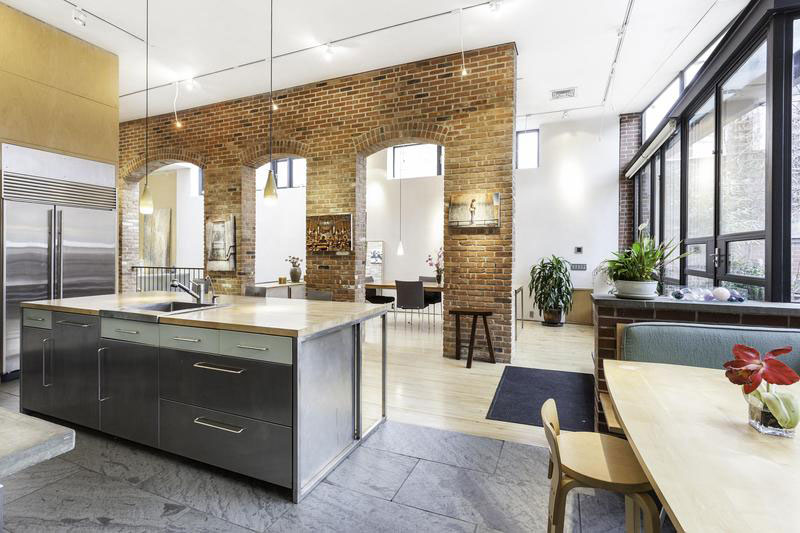
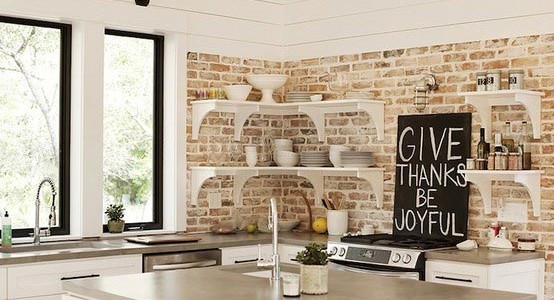
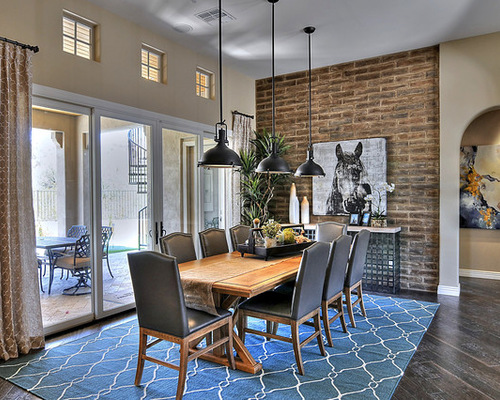
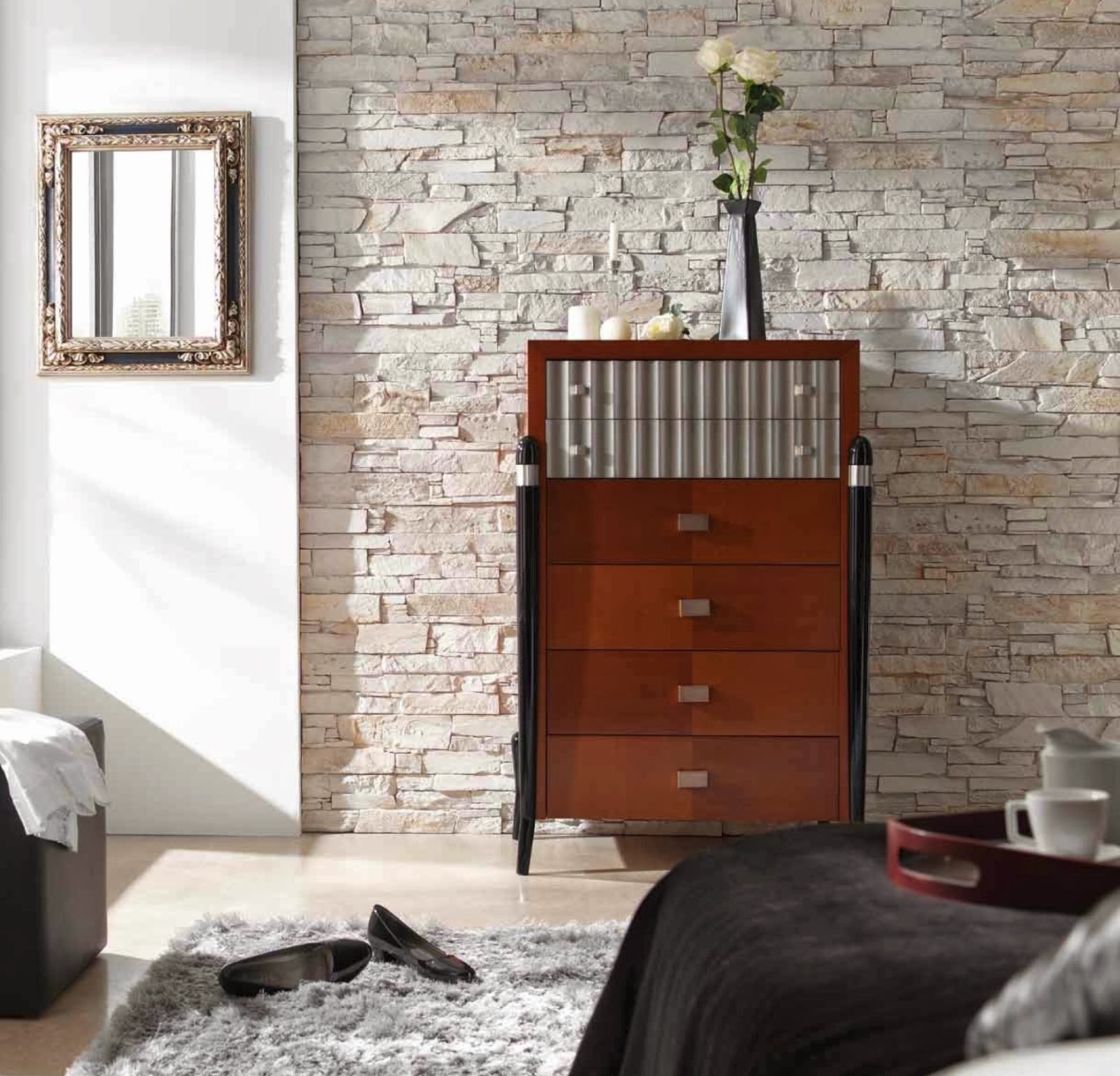
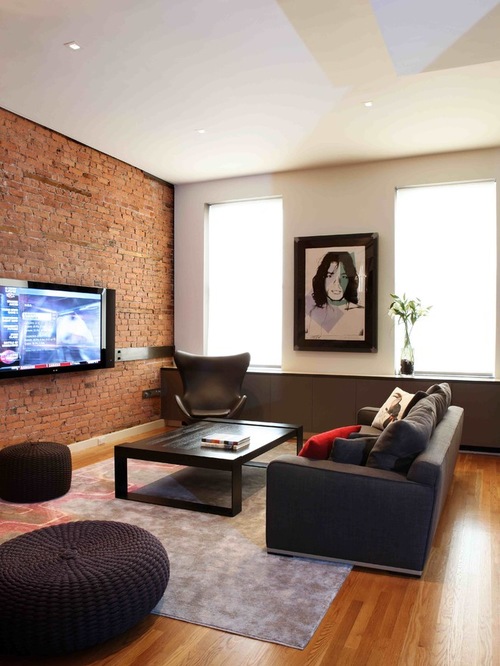
It seems to many that decorative brick in the interior should be used only in industrial styles (loft, neoloft), which are not distinguished by particular sophistication and classic comfort. In fact, only the incorrect use of this finishing material limits the scope of its real possibilities. If desired, it is possible to obtain a coating that is distinguished by unsurpassed sophistication and comfort.
For decades, the brick walls were heavily plastered and puttied. Interior and inter-apartment partitions, which were often made of this material (in old houses), were not of particular interest for creating a decorative coating. But gradually the situation began to change in the other direction. First, products began to appear that imitated brickwork. Initially, these were cheap plastic panels.
Gradually, the understanding came that a brick for the interior is an excellent decorative solution. The walls began to be cleaned of plaster, and the opened masonry was processed to the desired state. But not everyone has this opportunity. Therefore, a brick for interior decoration began to appear, which is made from various materials. In the early stages and to this day, amateur craftsmen made it on their own from a gypsum mixture.
 Self-manufacturing decorative brick
Self-manufacturing decorative brick The use of decorative bricks in the interior of various rooms
Now the material is used everywhere, for many rooms of a house or apartment. Exist general rules, which help to make the design the most correct, to give the interior attractiveness and comfort.
Application in bedrooms
The bedroom differs from other rooms in that it serves for complete relaxation and rest. Therefore, this room should be cozy, setting in a peaceful mood. Many mistakenly try to make this room a collection of styles, flashy colors and abstract solutions. It must be understood that the bedroom is a closed place, access to which should only be given to the elite.
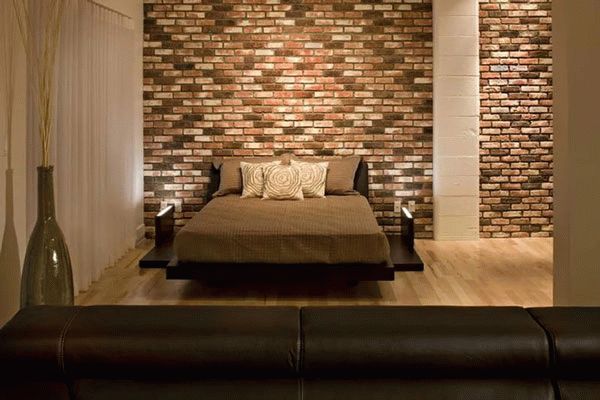 Decorative brick in the interior of the bedroom
Decorative brick in the interior of the bedroom Decorative brick in the interior of such a room requires compliance with certain rules. It is used in the following way:
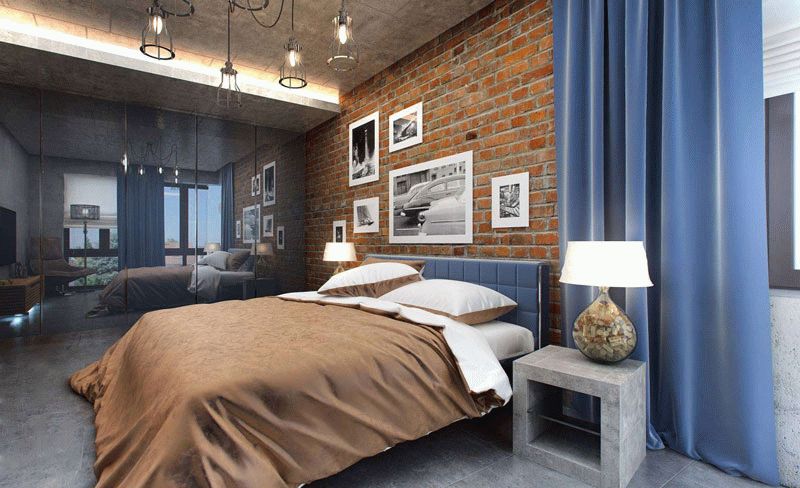
 Decorating the lined surface with a picture and lamps
Decorating the lined surface with a picture and lamps Advice! In the sleeping area, furniture looks good, which is literally built into the walls. This eliminates unnecessary gaps. It is these items that are well framed by decorative products.
For the kitchen area brick - perfect solution. It does not matter at all what style will be applied: rustic, romantic or modern. The main thing is to correctly focus attention, especially if this room combines cooking and eating.
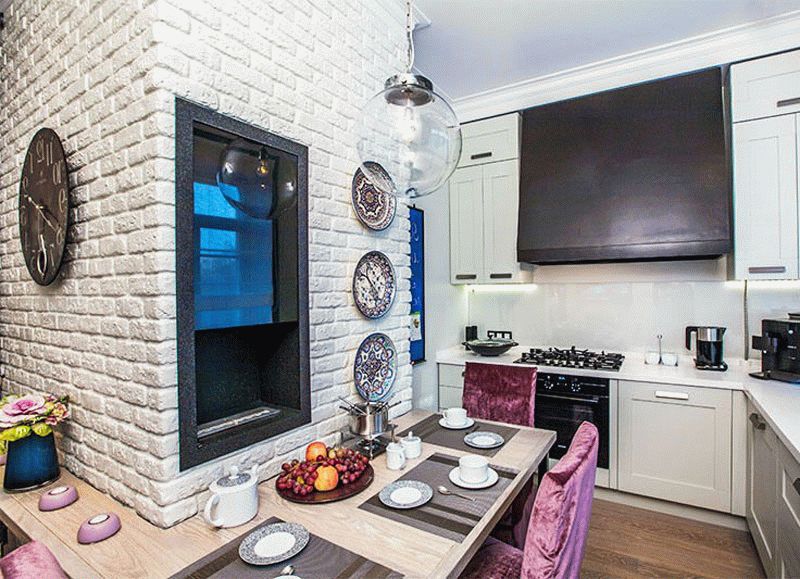 Brick wall in the kitchen
Brick wall in the kitchen Some tips:
- Separate zones are clad, for example, an apron. In this case, it is necessary to take into account the color and material of the countertop. Contrast, even slight, looks best.
- Wall in front dining table- Fully lined. The combination of brick and glass furniture, chairs on a metal frame (chrome, with seats and backs made of leather or a good substitute) looks good.
- Looks great room, which is devoid of bulky wall cabinets. Instead, only small shelves are used. Then the decorative material covers the entire area of \u200b\u200bthe wall, which is above the countertop. Even a small room becomes more comfortable and bright. Especially if white brick is used in the interior of the kitchen.
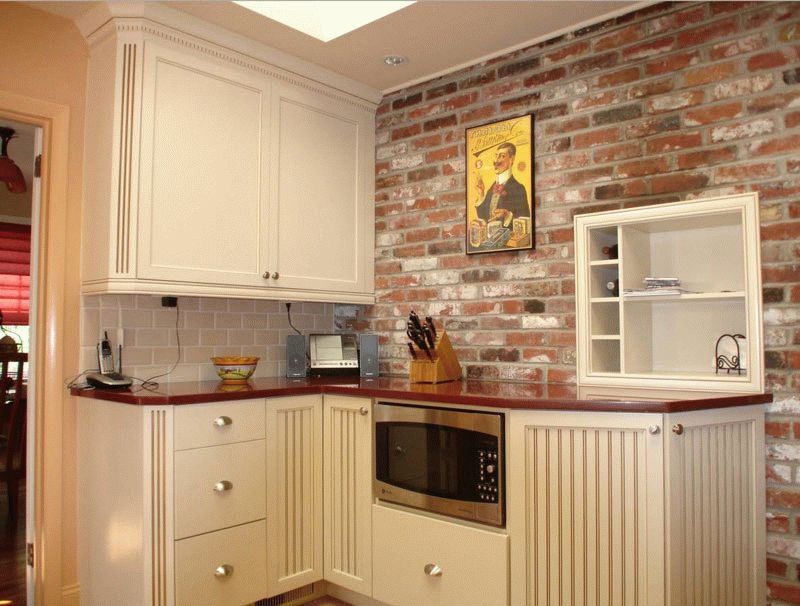 Making a kitchen apron with decorative bricks
Making a kitchen apron with decorative bricks On a note! It is quite difficult to combine such a finishing material with objects. kitchen furniture, which is covered with gloss (plastic, film, varnish), the brighter shades: red, rich green, mother-of-pearl. In this case, the walls of light colors will be comfortable.
hallway decoration
It's hard to find a hallway that's different good size. Often these are small rooms that immediately lead to other parts of the apartment. Therefore, decorative brick in the interior of such an object needs careful consideration. Common Mistake, which is quite common - an attempt to completely veneer a small space. This creates the feeling of a well.
Such a decorative product looks successfully in combination with other types of finishing materials. For example, all openings are covered with bricks, and the walls remain free. The empty space is pasted over with wallpaper, covered with a layer of decorative plaster.
Living room - the main room of the house
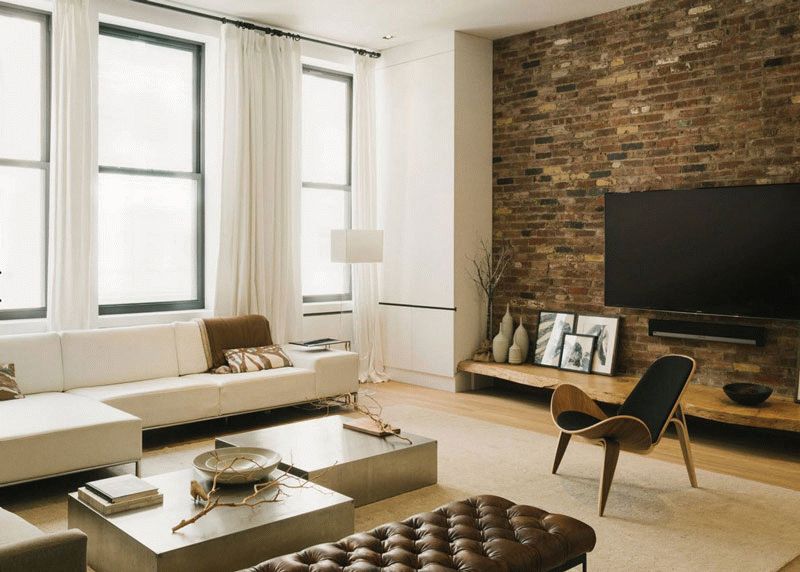 Using decorative bricks to decorate the living room
Using decorative bricks to decorate the living room Being a room where a lot of time is spent and guests are also welcomed, the living room should be the center that combines the overall decorative idea. Therefore, when arranging this room, adhere to the following rules:
- This is an ideal place where the brick looks good on several walls at once. That is, the surfaces are made either adjacent or parallel. This technique is suitable for objects whose area exceeds 50 sq.m.
- The presence of a fireplace makes it mandatory to have such a finishing material on the wall.
- Do not overload the room with a large number of decorative products. The finish itself looks good long wall, which may be a continuation of the corridor.
 Most often, decorative bricks are used to finish the longest wall in the living room.
Most often, decorative bricks are used to finish the longest wall in the living room. - Care should be taken if work is carried out in an apartment that has a common living room and kitchen (studio). Then it is good to use decorative bricks for facing a conditional dividing zone.
- The brick surface is well complemented by minor elements. For example, family photos in frames or modular paintings.
On a note! To imitate vintage material, white brick in the interior is coated with a special coloring composition, in addition, front part should have traces of chips and notches. This option is suitable for creating mixed styles that can combine old and modern. This is perfectly complemented by the correct play of light.
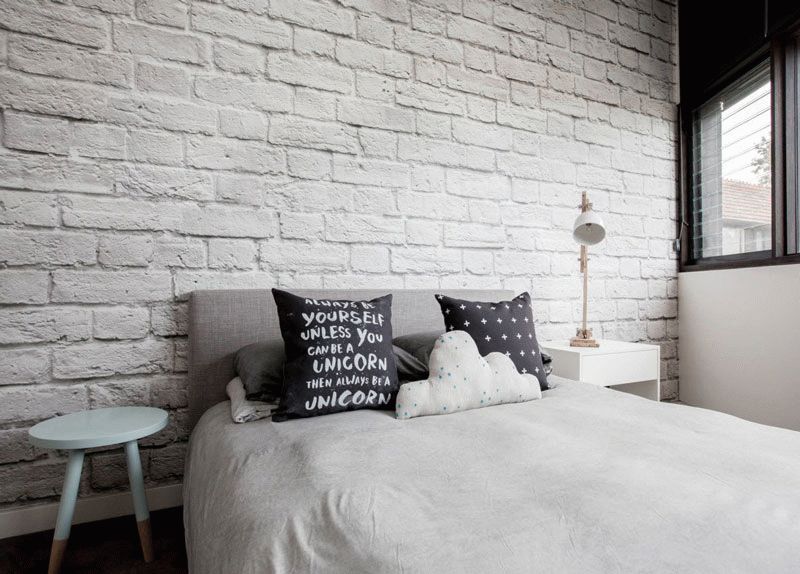 Artificial aging of decorative bricks provides new design opportunities
Artificial aging of decorative bricks provides new design opportunities Nuances to pay attention to
- The color of the finishing material should be combined with the main shades of the room or interior items.
- For a greater visual effect, the seams should be highlighted.
- In the bathroom, decorative bricks are covered with additional impregnation.
- It is necessary to pay attention to the surface of the product itself, it can be smooth, embossed and rough.
Photo gallery: decorative brick in interior design
Today, decorative brick for interior decoration has become a very popular material; a photo of an interior trimmed with such material can be easily found on many sites dedicated to materials and technologies for interior decoration.
Designers, having appreciated the texture, appearance and versatility of this material, are increasingly using it in their projects. Nevertheless, despite all the new trends, decorative bricks are rarely used as a finishing material in the apartments of average residents.
This is partly not surprising, because bare brick walls are rarely associated with comfort. If you look at the history, you can see that the original use of brick in the interior was a forced decision.
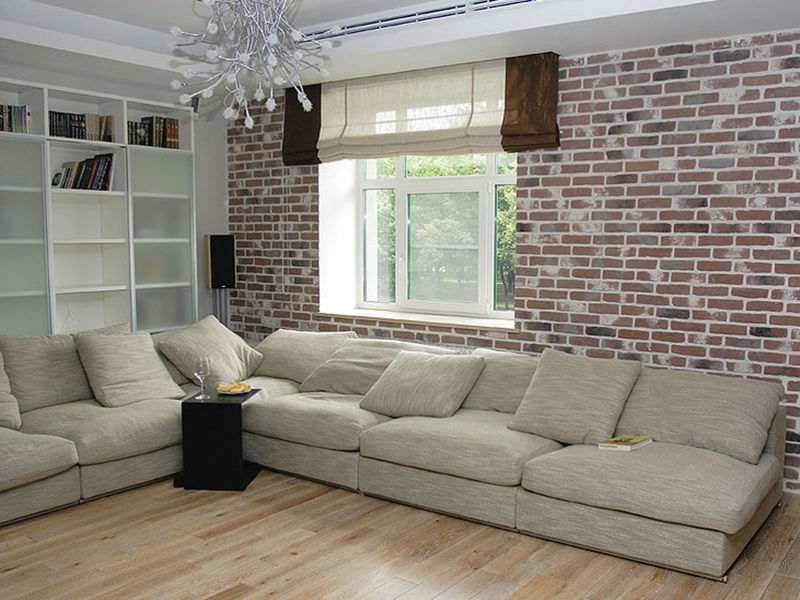
Like many non-standard fashion trends, brickwork came from the West. Such a decision was feature loft style. It originated in New York in the 40s of the last century, when buildings of non-functioning factories, factories and warehouses were equipped for residential buildings. Finishing in such "apartments" was minimal: brickwork, wires, pipes and beams under the ceiling. Over time, designers came to the conclusion that these elements look very original, and began to bring them into their projects.
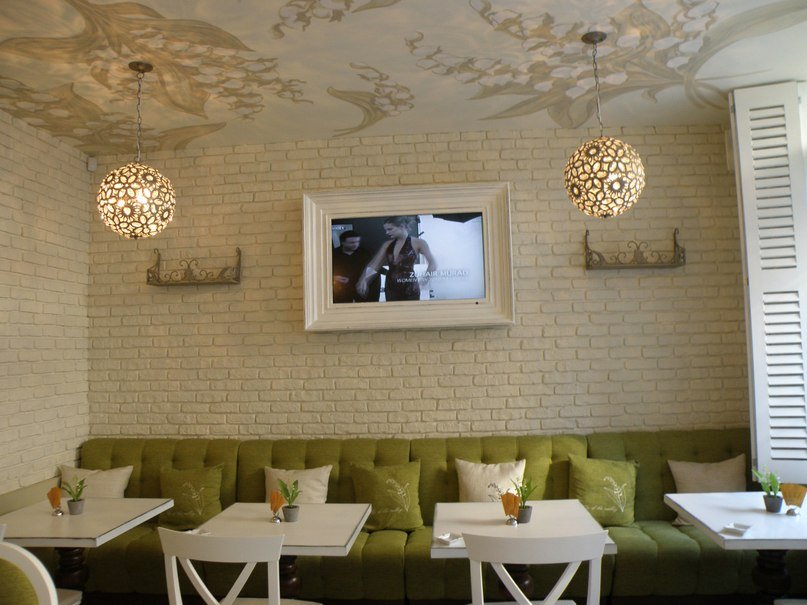
by the most in a simple way to give the interior originality is the use of natural brickwork. All you need is to remove a layer of whitewash, primer and plaster. But the disadvantage of this method is significant: you will have to periodically treat the masonry with a special protective solution, since durable bricks are destroyed over time under the influence of adverse factors.
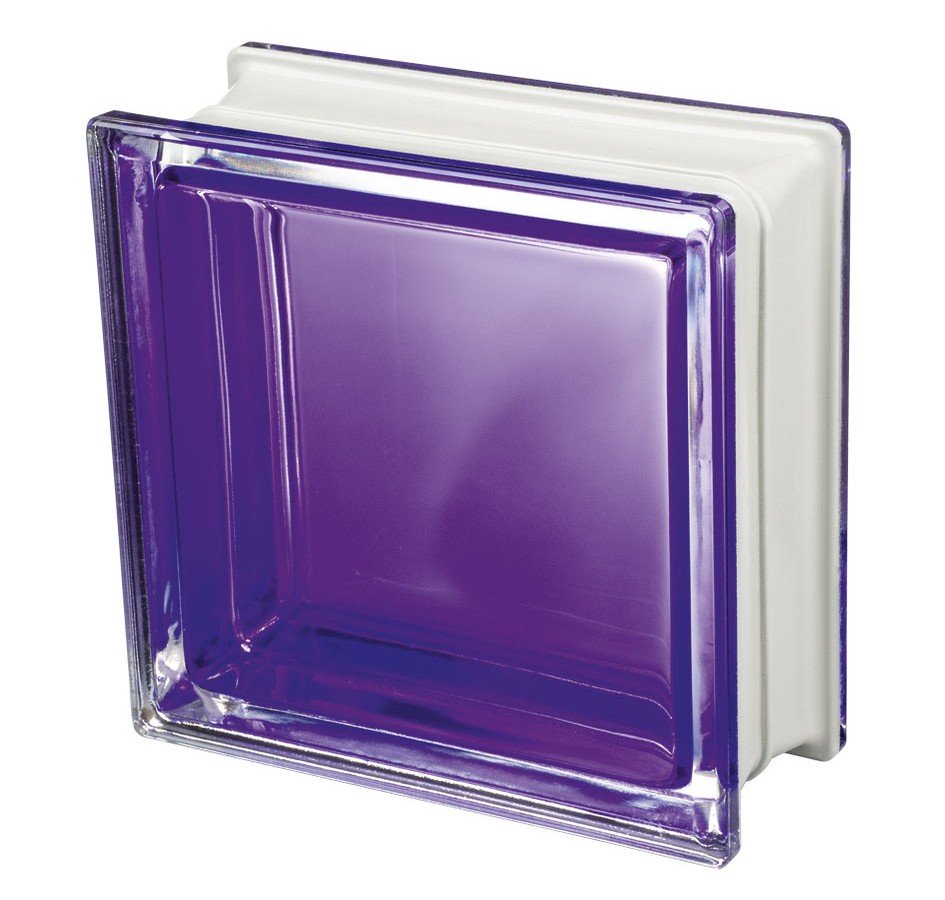
There are several alternative ways to create brickwork in the interior. First of all - wallpaper with the appropriate imitation pattern. But there is also one important point: only expensive ones will fit quality wallpapers, cheap, respectively, will look cheap and their pattern will not deceive anyone.

Another option is to imitate brickwork from glass blocks. This option is great for small spaces, as it brings more light into the space without reducing the usable area.
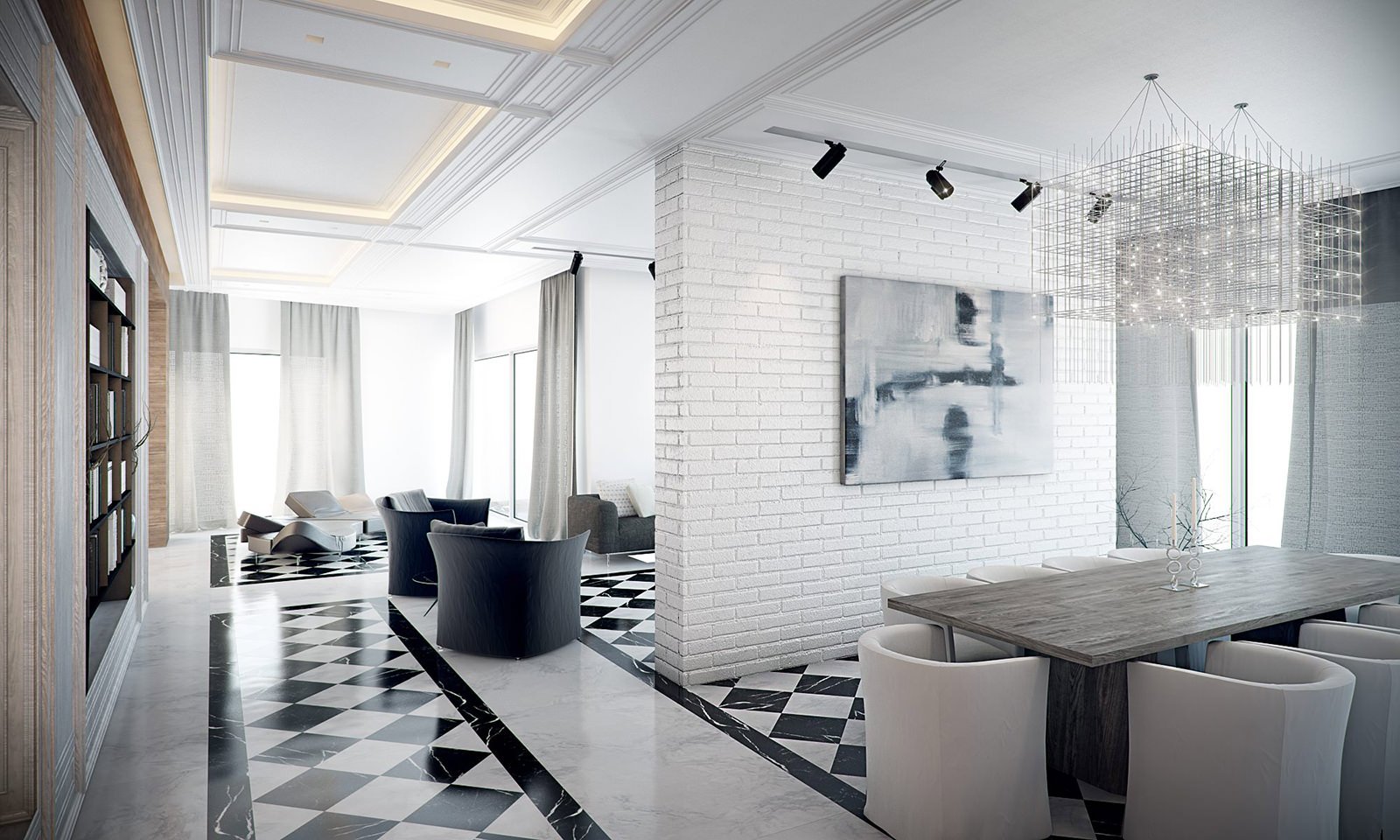
How to use decorative brick?
The simplest and most modern finishing material to create masonry in the interior, designers consider decorative bricks. This material has already become known as one of the most environmentally friendly, durable and easy to use. With it, you can easily and quickly decorate walls, arches, columns, niches and fireplaces.

Decorative brick in the interior in the photo looks exactly like ordinary masonry. In fact, this is, in fact, an interior tile. The thickness of such masonry is not more than 20 mm, due to which the material does not hide the usable area of \u200b\u200bthe room.

Tiles produce the most different forms and flowers, therefore, if desired, and right choice material can bring to life the most unusual solutions.
Many people think that brick is not best material for, but, after reading the photo, they come to the conclusion that brickwork brings a special atmosphere to the room. But to get so interesting and modern interior, it will take more than courage and a willingness to take risks.
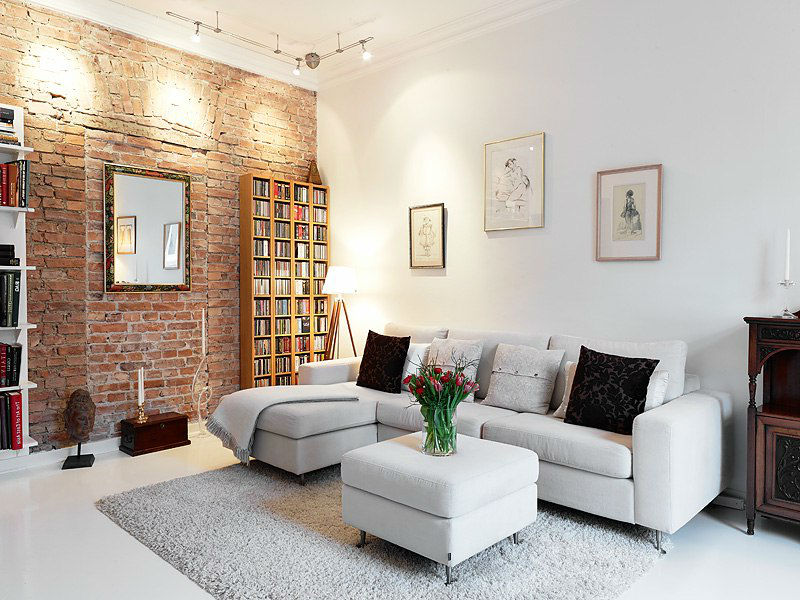
When drawing up a design, a sense of style and a sense of proportion are equally important. And also - following the main rule - everything should be in moderation. Brickwork should be only one of the design solutions, but in no case should it fill up the entire space. Otherwise, the space will turn out to be gloomy, oppressive and completely uncomfortable. To prevent this from happening, it is recommended to allocate only a certain part of the room:
- one wall (accent), such a solution is equally well suited for any room;
- fireplace area;
- architectural elements (columns, arches, niches, etc.).
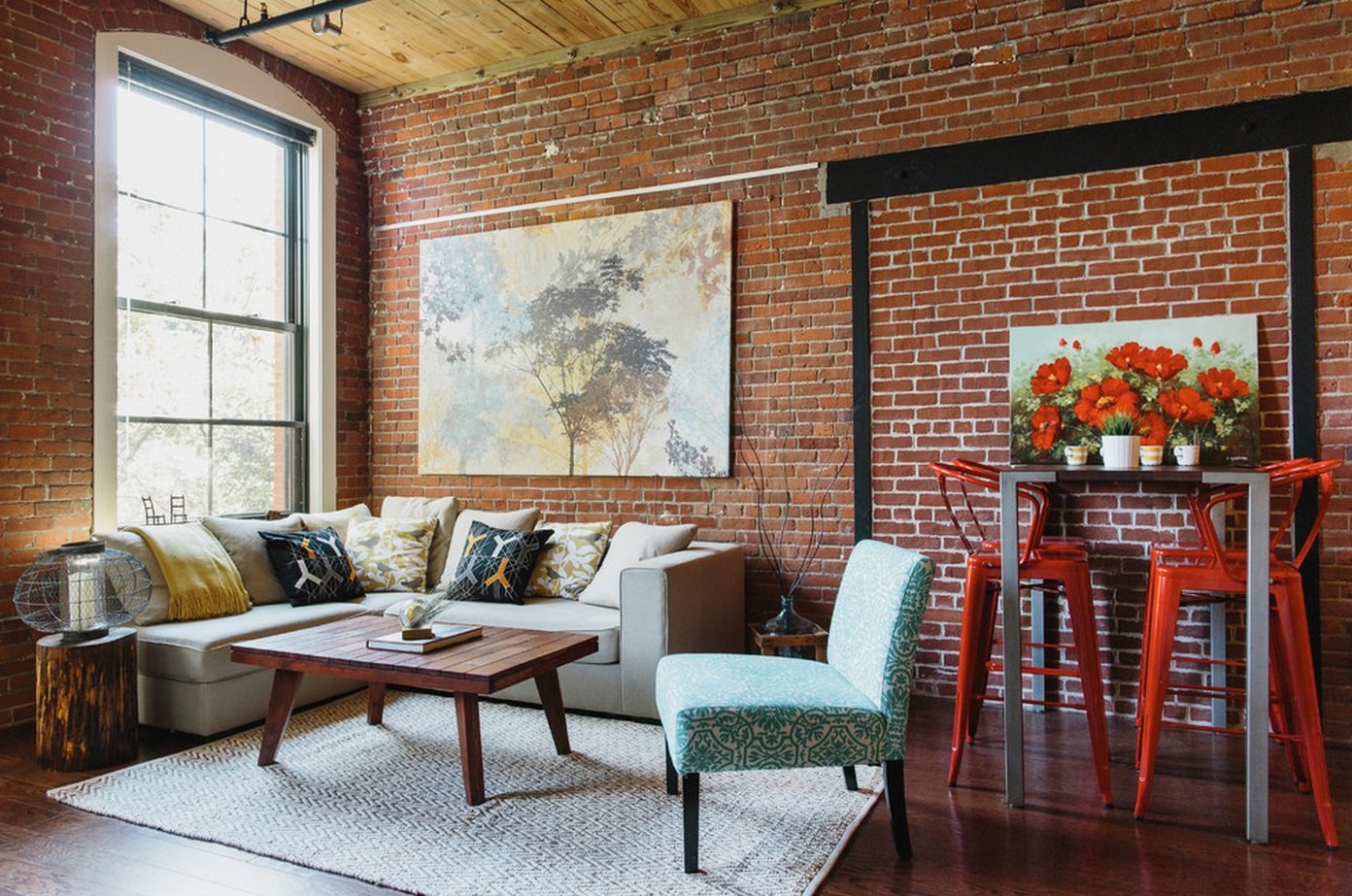
Another requirement is that brick should be appropriate in the interior, it should not be in rooms made in styles that do not imply the use of rough textures. For example, a brick would be inappropriate in rooms made in romantic style. After all, brickwork, as it were, symbolizes reliability and durability, but not romance and lightness.
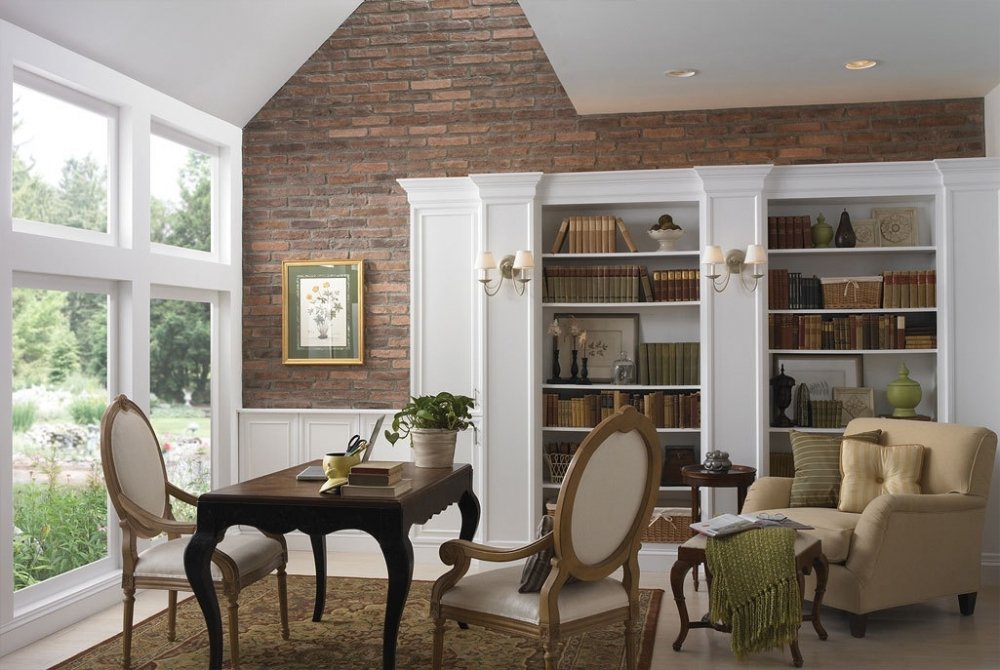
Where can decorative bricks be used in the process of interior decoration?
An important question that worries those who decide to use decorative bricks in the interior of an apartment, which walls are better to veneer, photos of interiors that are available on the pages of specialized sites can help decide on this issue. In fact, there are no special restrictions here: tiles - versatile material, which is well suited for any premises. But before choosing a material, you need to consider the specifics of the room.

Best of all, decorative brick looks in the hallway. A darker tile is suitable for this room, as pollution is less noticeable on it. It is not necessary to finish all the walls of the hallway with decorative bricks, you can only one or even part of the wall: for example, you can beautifully decorate a niche for a mirror or another decorative element.
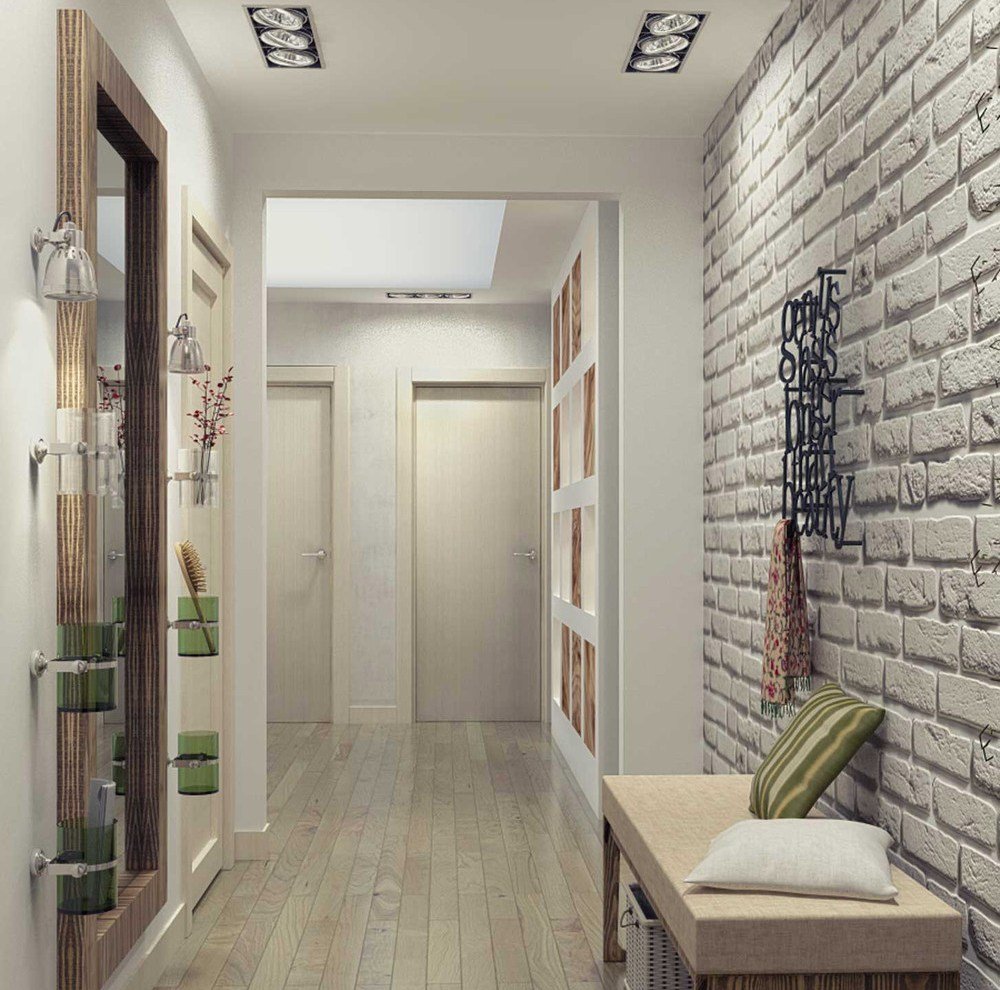
If the hallway is small, the above rule can be neglected, otherwise the room will be too dark and leave only a depressing impression. In a small hallway, light-colored tiles are appropriate.
The possibilities for decorating the living room are much wider. Most often, it is recommended to lay out only one wall with decorative bricks in the interior, such a finish can be seen in the photos posted on sites dedicated to finishing work. She will become the main touch of the room. On this wall is the main part decorative elements, and along it equip the living area.
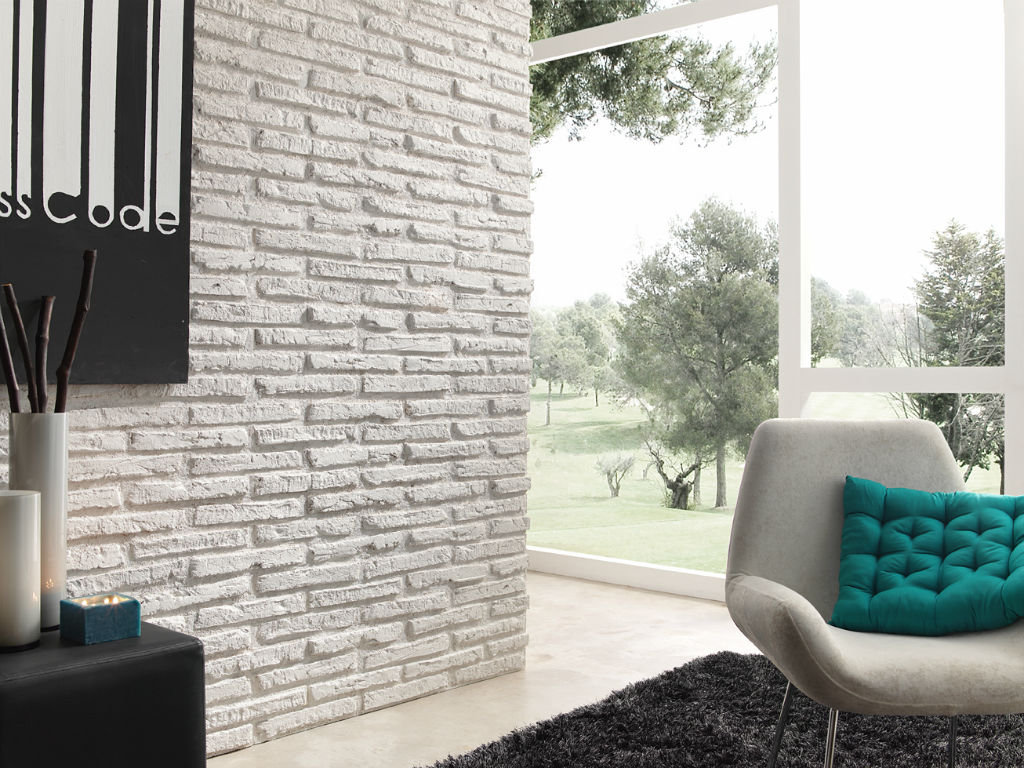
When choosing a brick, it is also worth considering the characteristics of the room. If the room is spacious, then the decorative brick of classic red color will “fit in” well into the interior, possibly imitating old masonry. For small living rooms, as well as for hallways, as well as living rooms in scandinavian style, white tiles will be a more advantageous option.
Another interesting option decoration - decorate with tiles only: the fireplace itself, the wall around it and the podium. If you add live green plants and textiles to the interior, you get an interior in rustic style. And if you choose more modern furniture and do without unnecessary decorative elements, the interior will acquire a modern minimalist style.

Decorating the kitchen takes place according to different schemes. One of the most common is the emphasis on the dining area. At the same time, the wall closest to the dining area, or part of it, is lined with decorative bricks. Often decorated with decorative bricks kitchen apron. Antique tiles, contrasting with modern ones, make a very special impression. kitchen appliances and furniture.
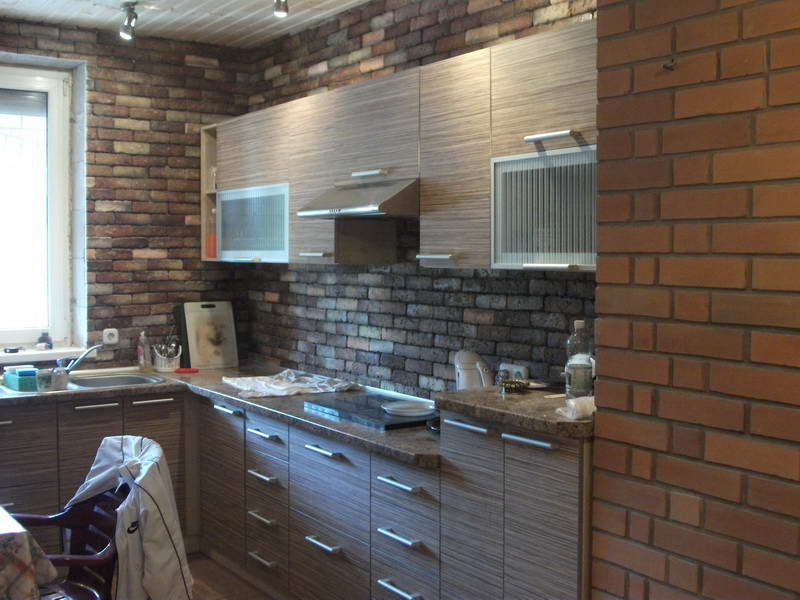
Color and style solution
A red tint with a slight brown tint is considered traditional. Such tiles are most often used to decorate and give the room a special atmosphere. But you should not get carried away with such decorative bricks: it is quite enough to decorate a niche or column with them.
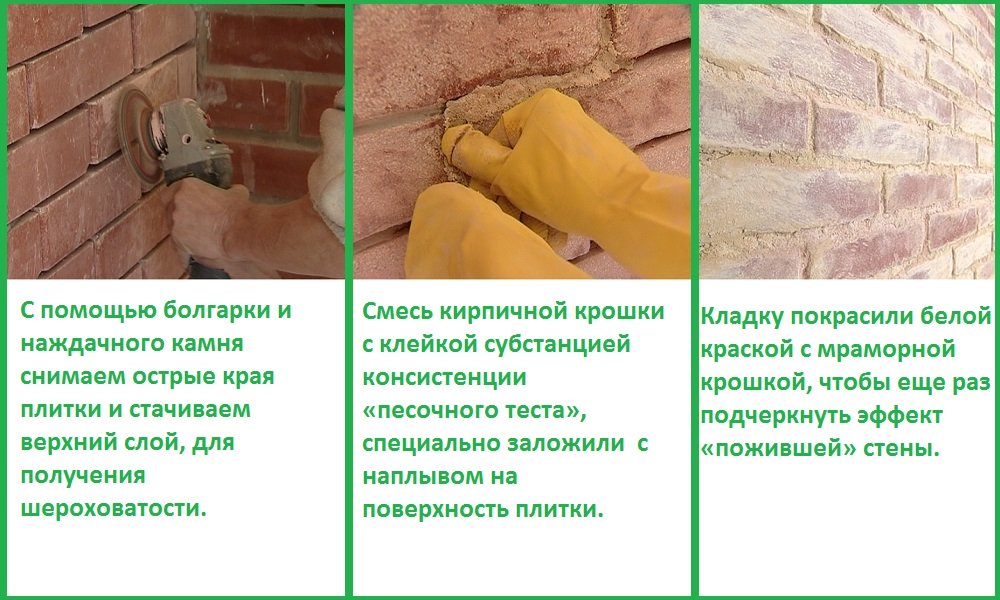
White brick is only gaining popularity and may well push classic version. As you can see in many photos, decorative brick in the interior attracts attention. Material white color makes the surface neutral and therefore fits harmoniously into the decor of the room.
Popular design solution- use of aged tiles. To do this, you either need to buy ready-made material, or treat the wall with building acid, blowtorch or sandpaper.
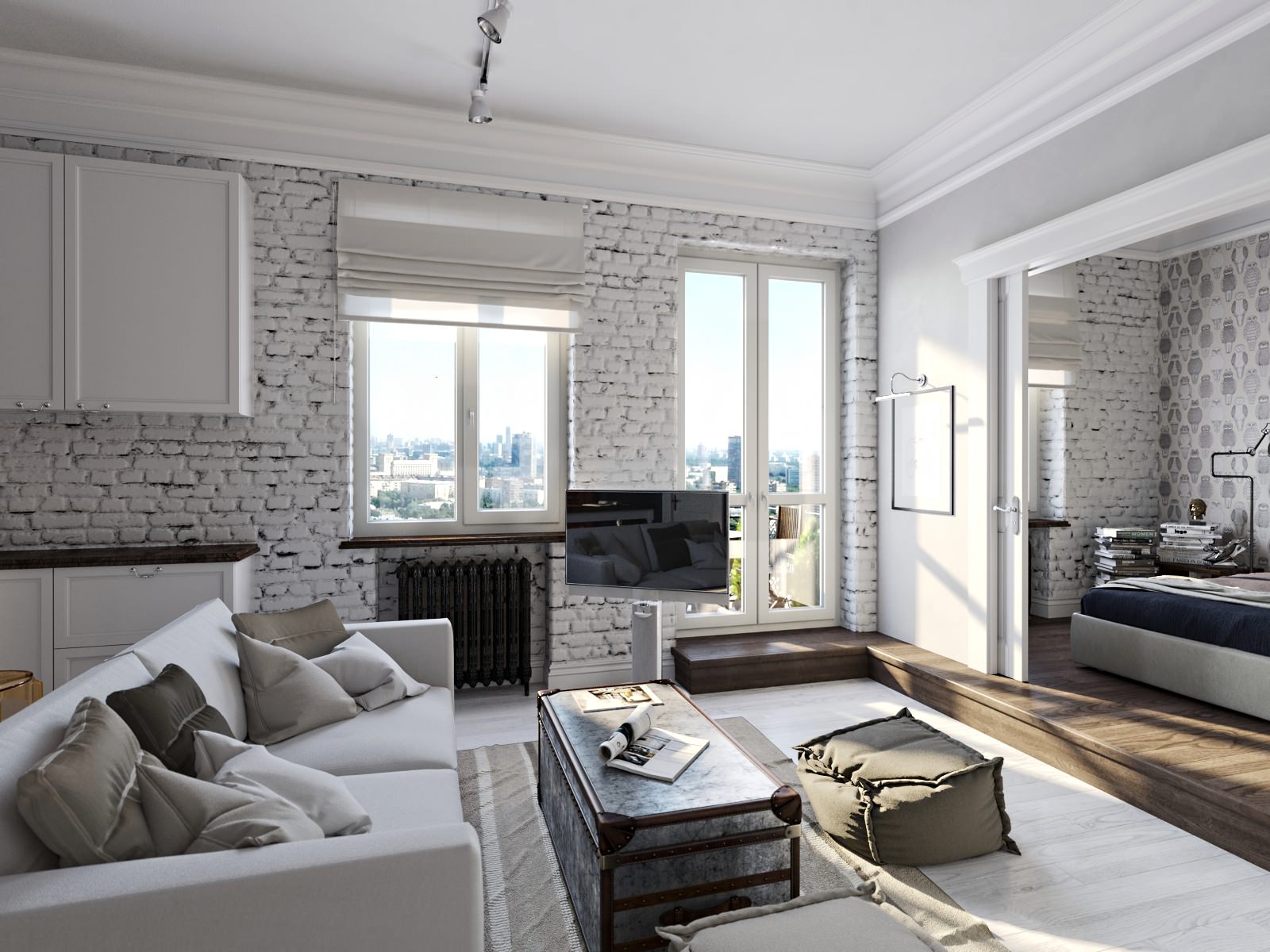
When it comes to styles, most often brick walls are associated with industrial style, or loft. At the same time, the use of this material allows you to bring industrial aesthetics to the interior. Apart from brick wall, often arrange beams or pipes under the ceiling, use metal furniture (or on a metal frame).

Country style is a repetition of the style of a country house. Brick in such rooms is most often used for facing the fireplace. It is necessary to give the atmosphere country house, distance from big cities and proximity to nature.
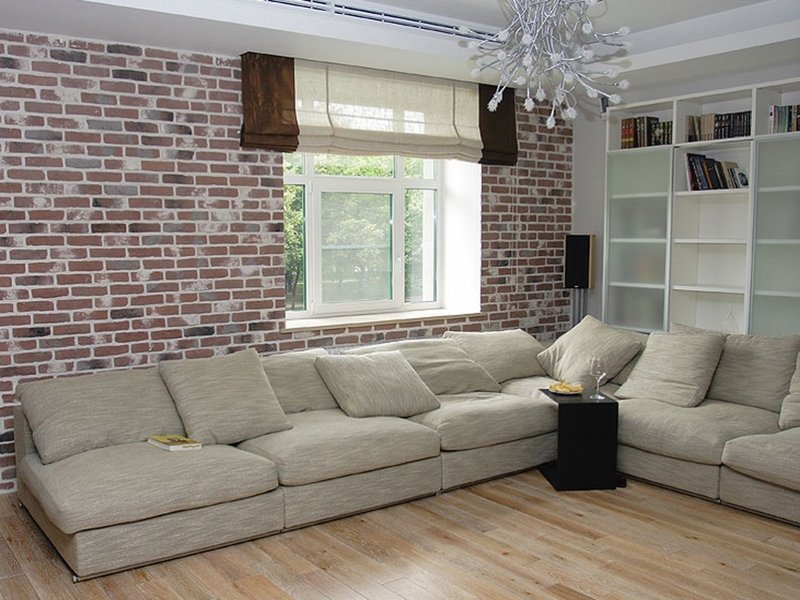
Gothic and Neo-Gothic are styles that evoke memories of knight's castles. Walls and columns are lined with decorative bricks in rooms designed in a similar style. The rigidity of this material is combined with the sophistication of the furniture, which creates an extraordinary effect.
Modern style is somewhat opposed to country, as its goal is to emphasize the urban features in the room, the remoteness of a person from a serene life in nature and the desire for something new. Walls lined with decorative bricks are adjacent to dark (up to black), gray or white walls that have not been faced.
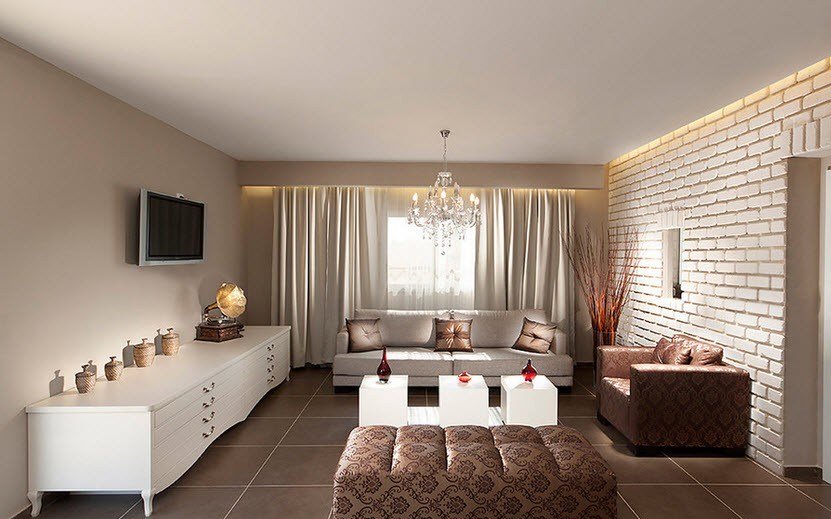
As you can see, decorative brick can be used in the interior: it will create a special atmosphere in any room, organically fit into the interior of different styles.
I like




